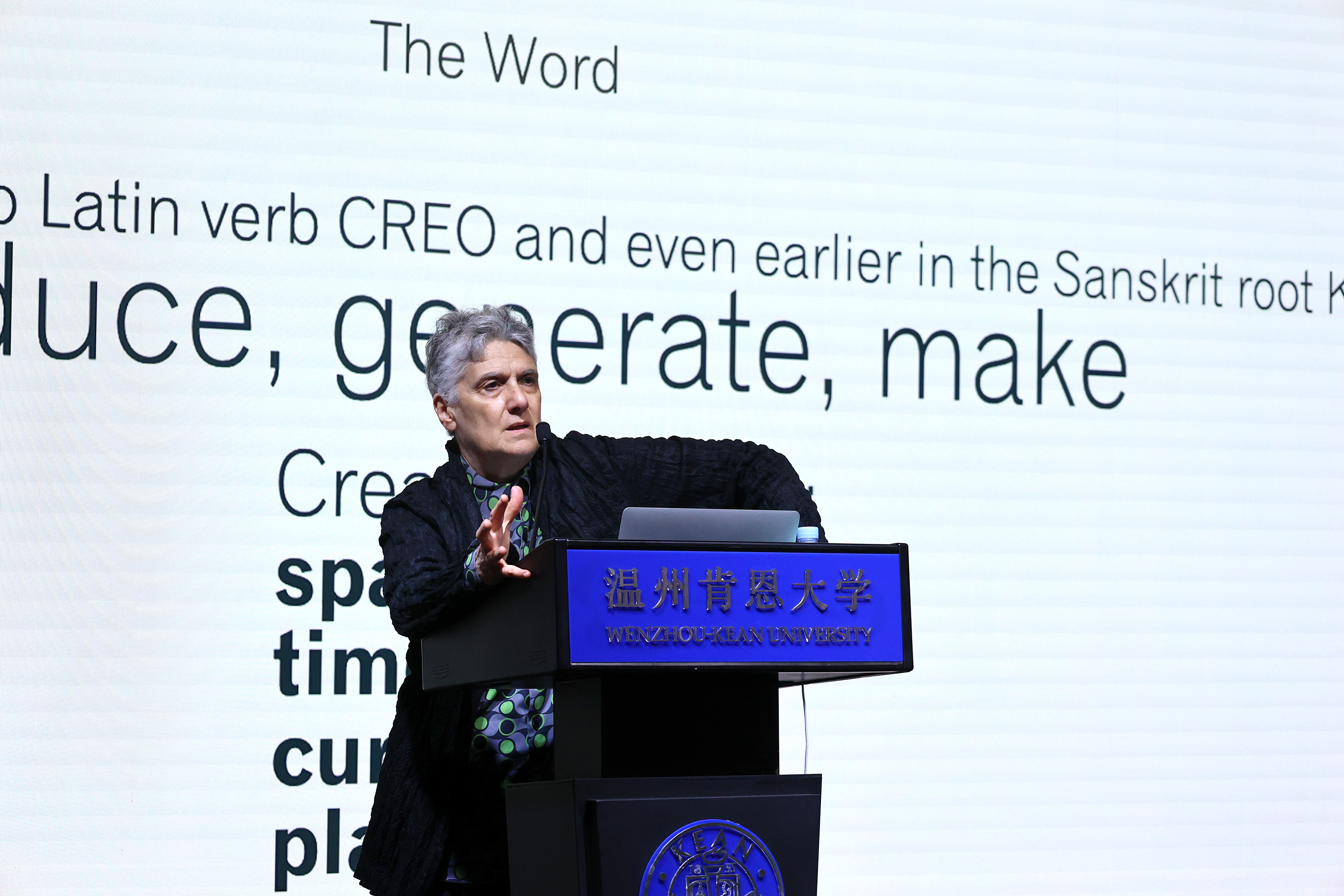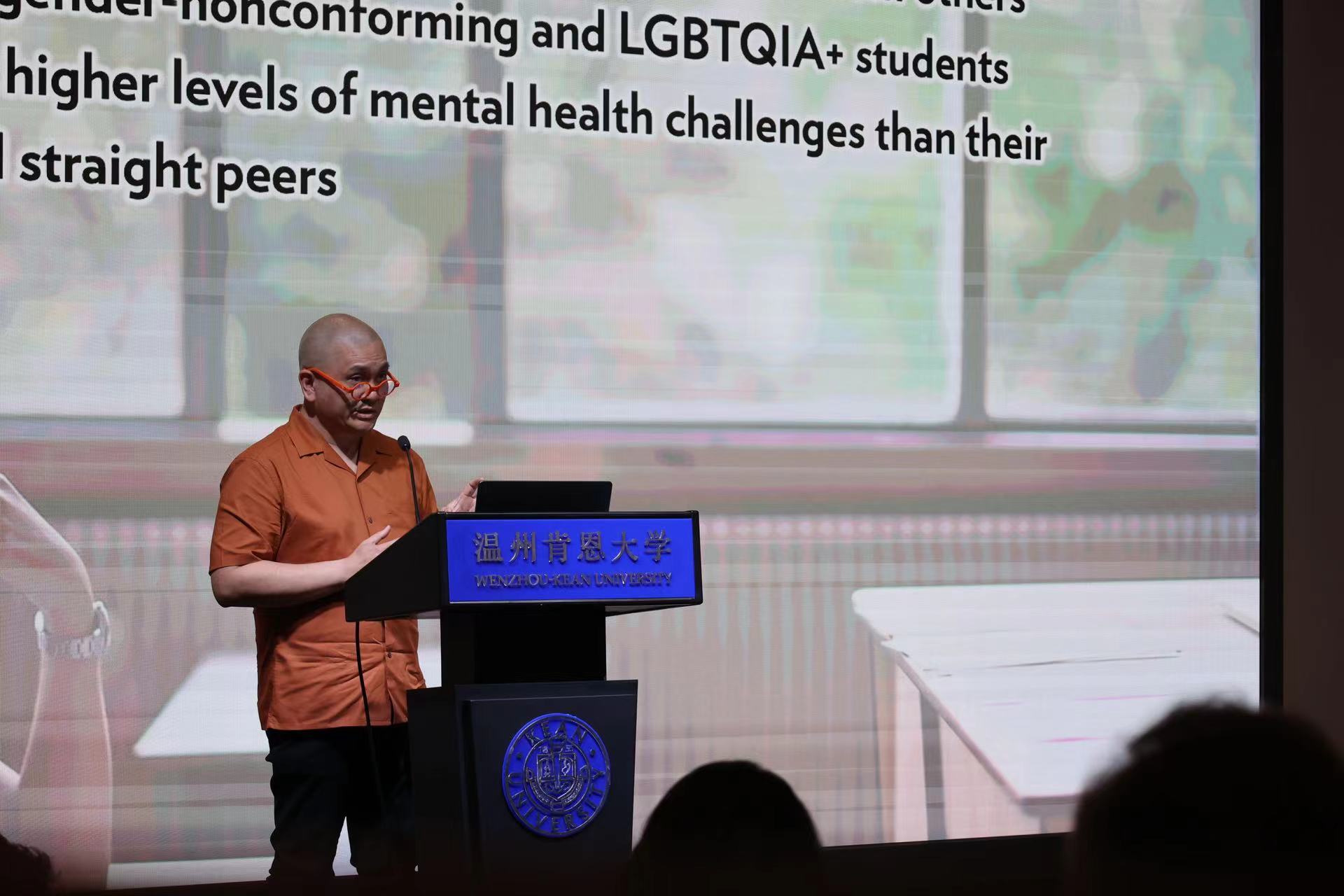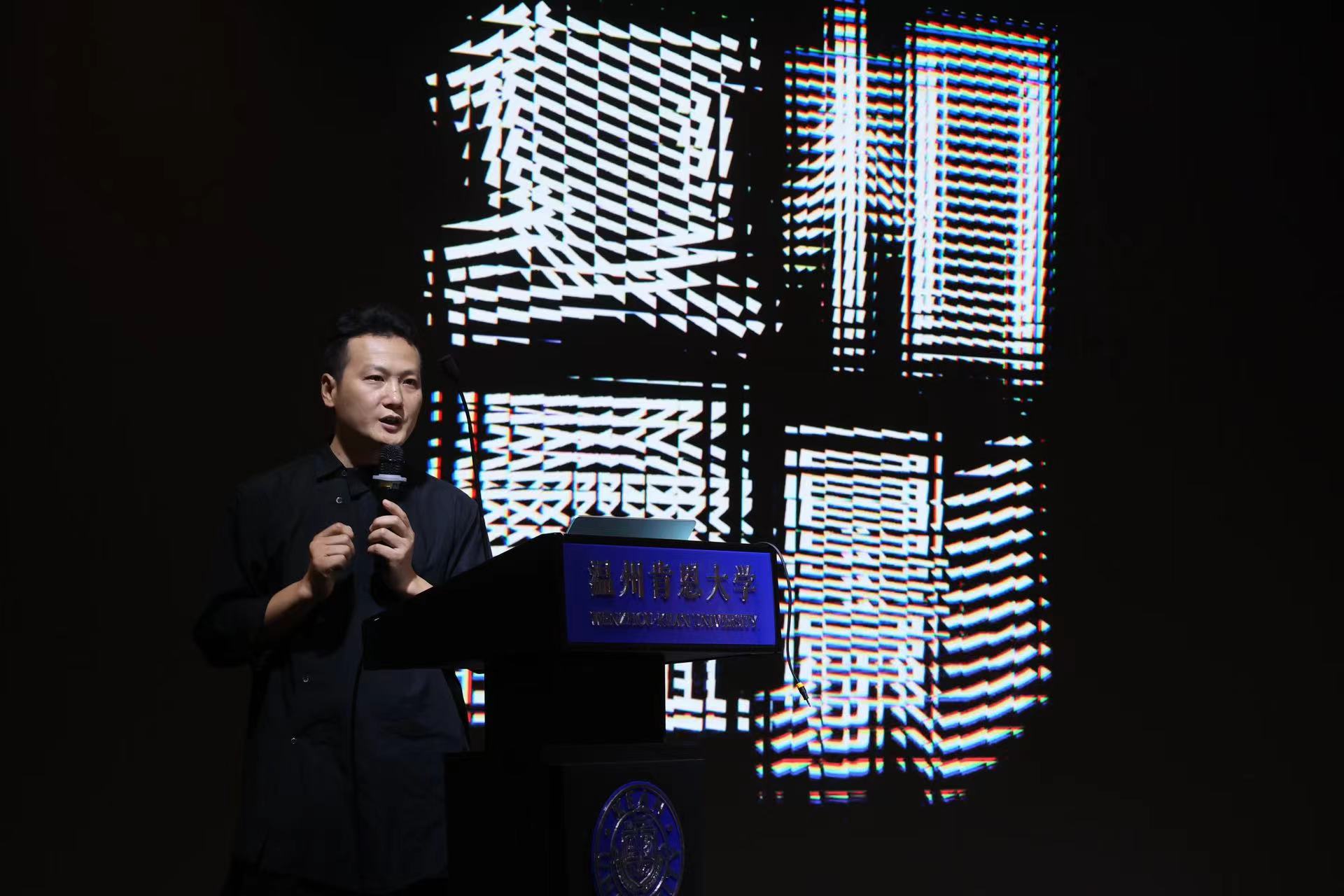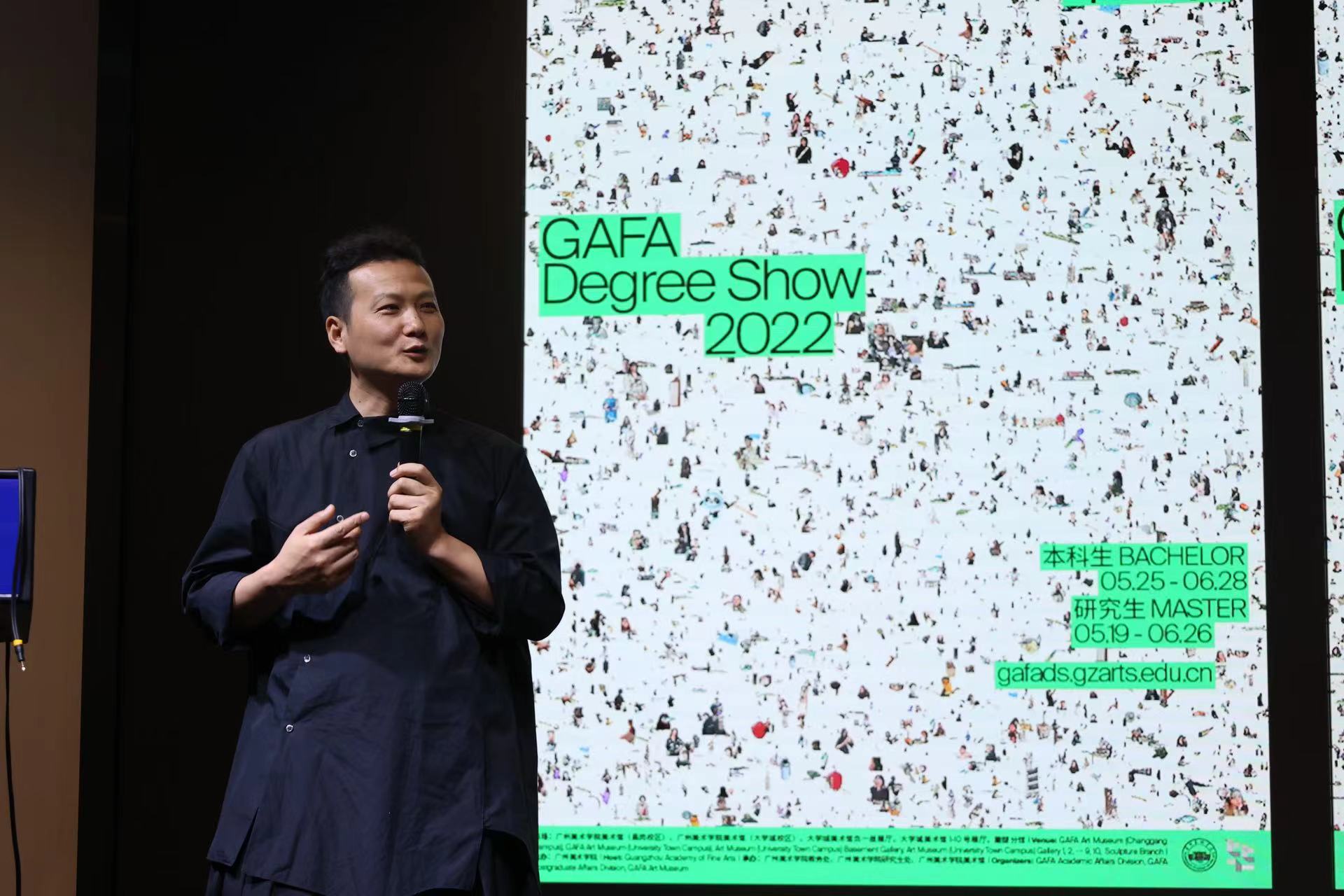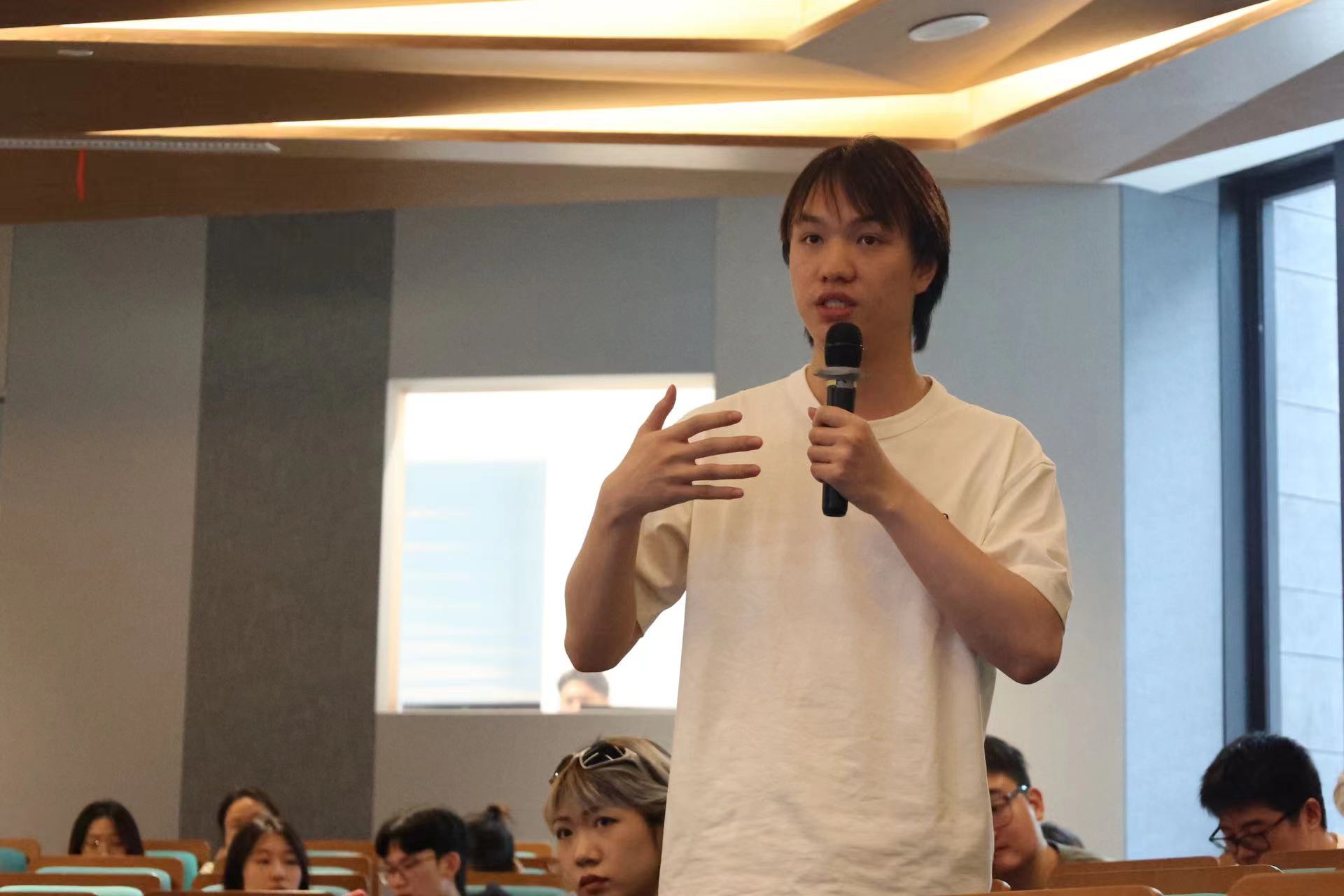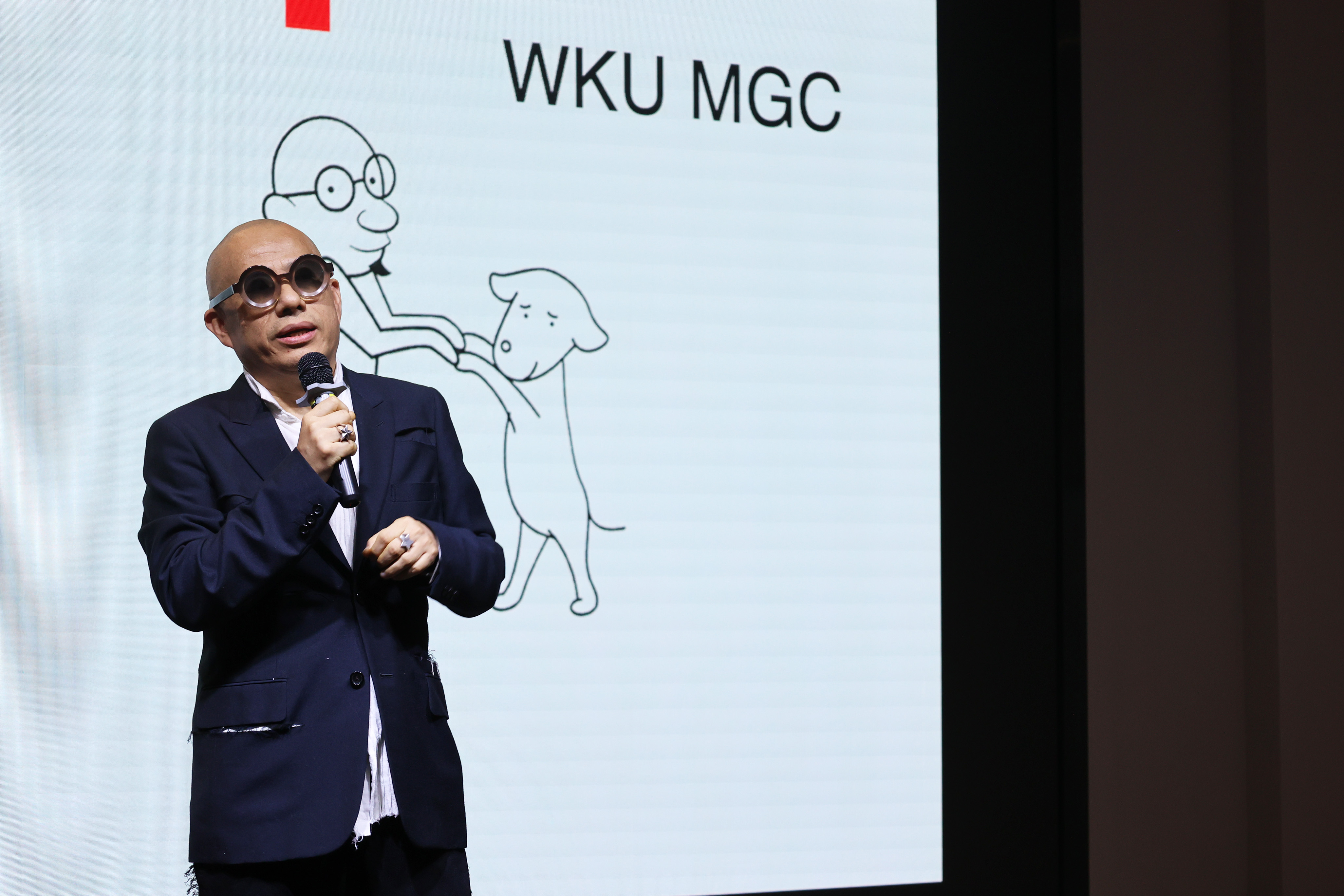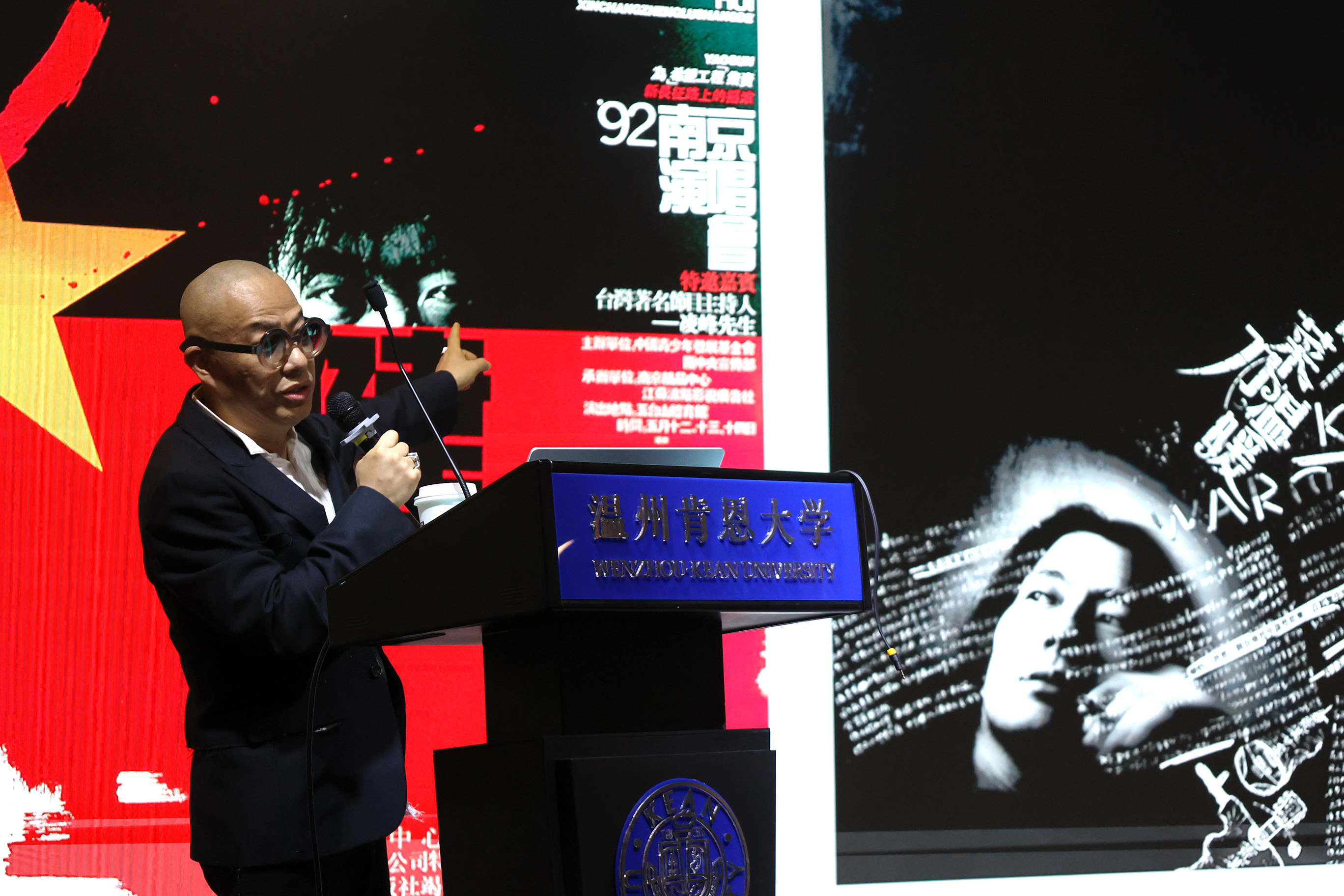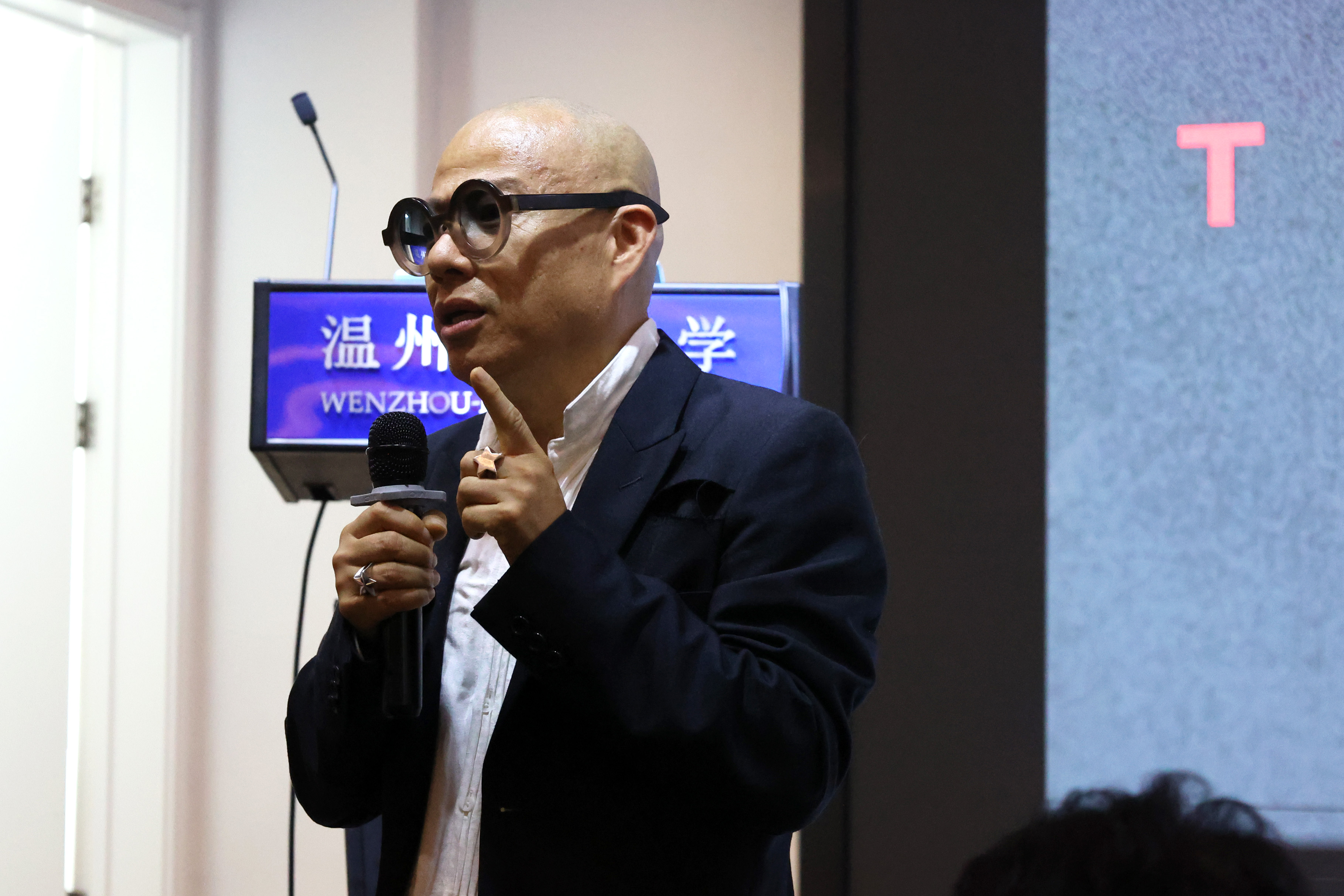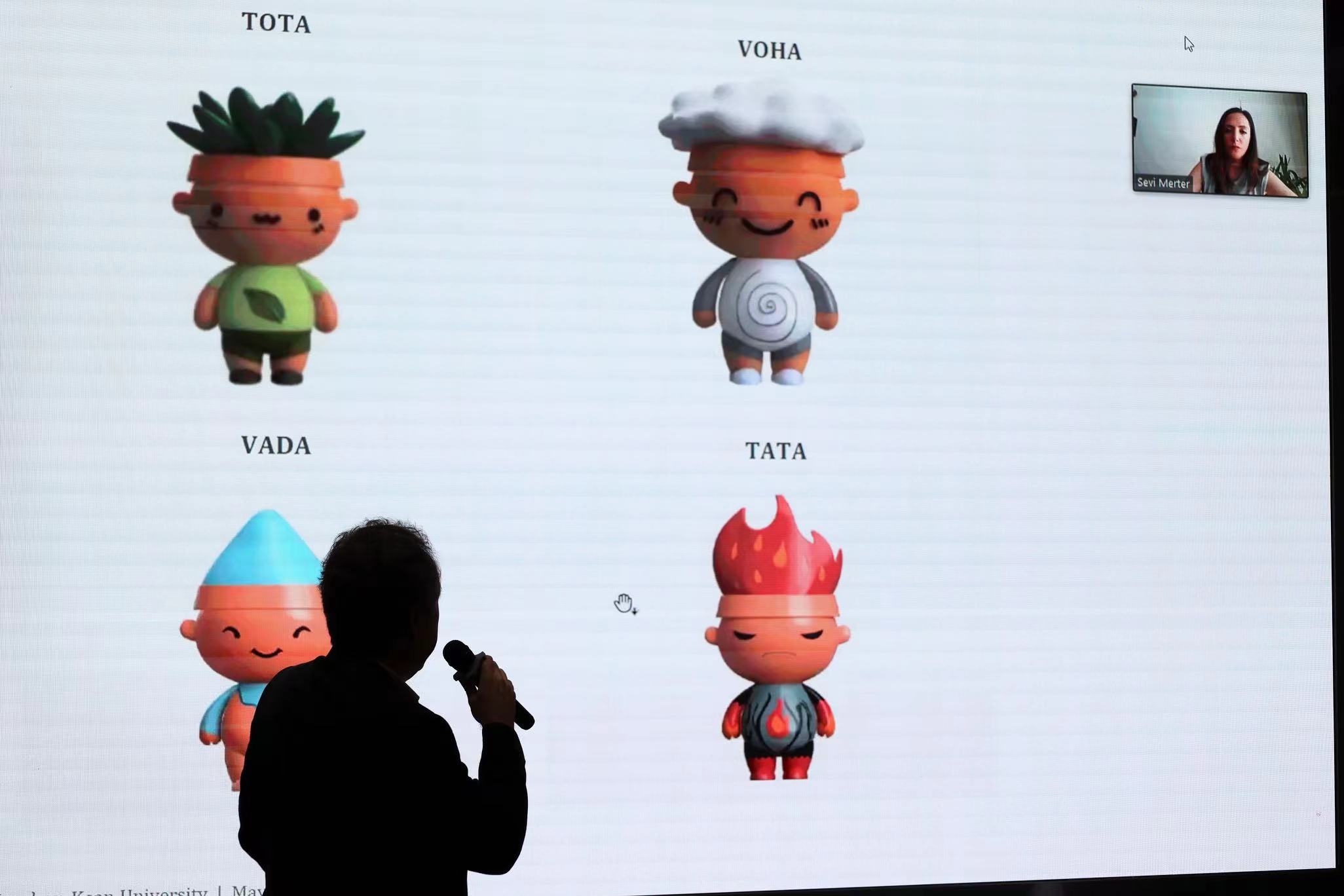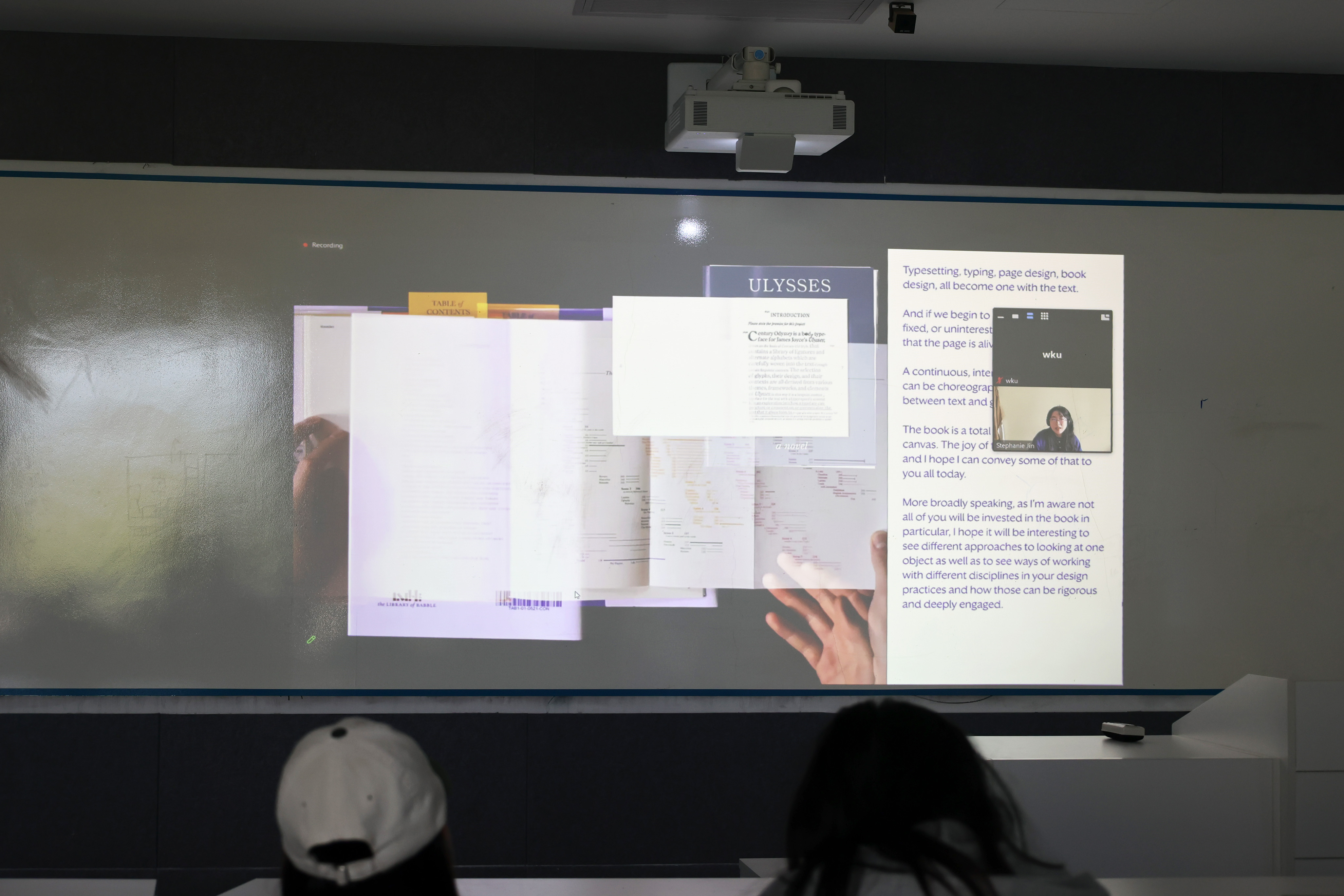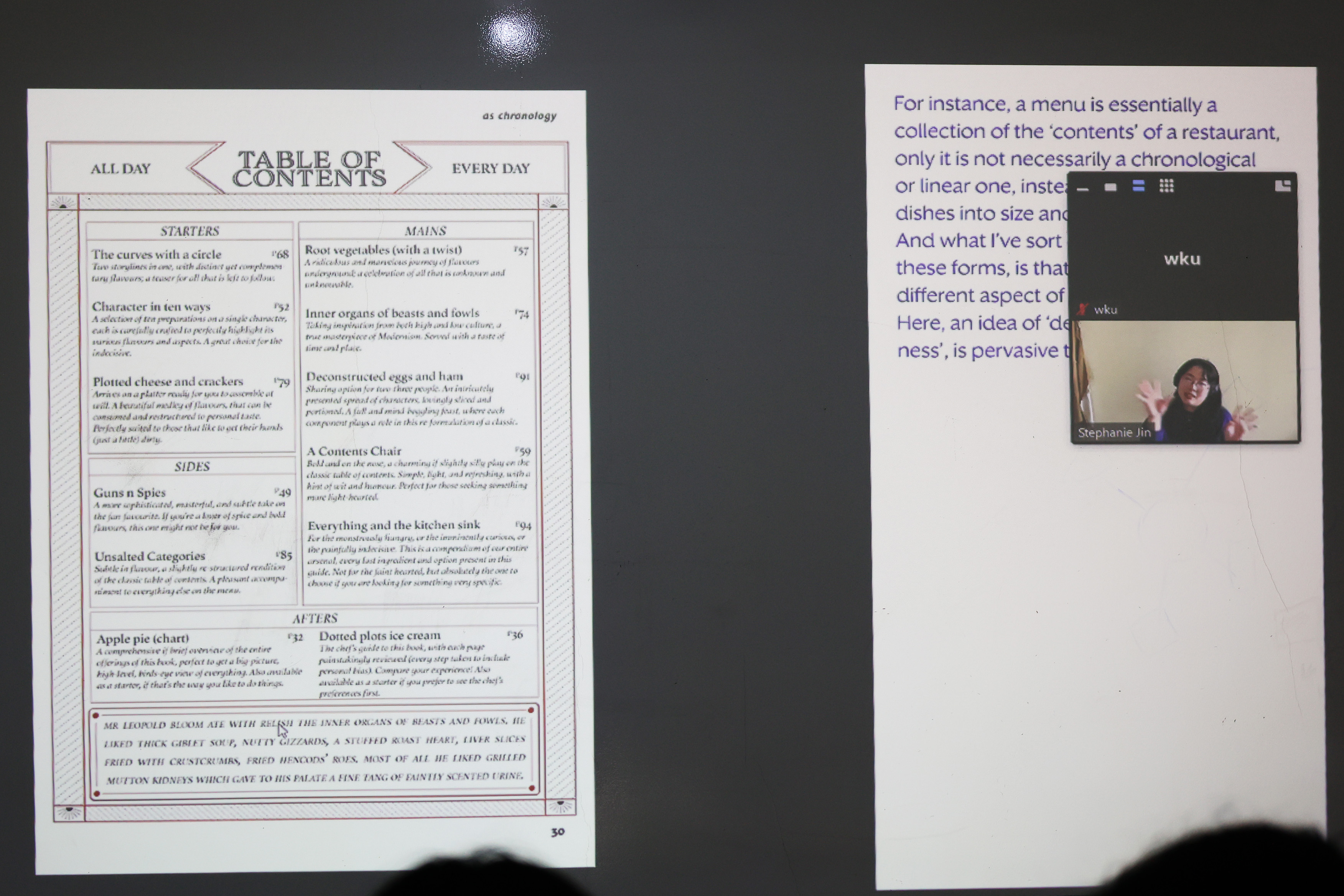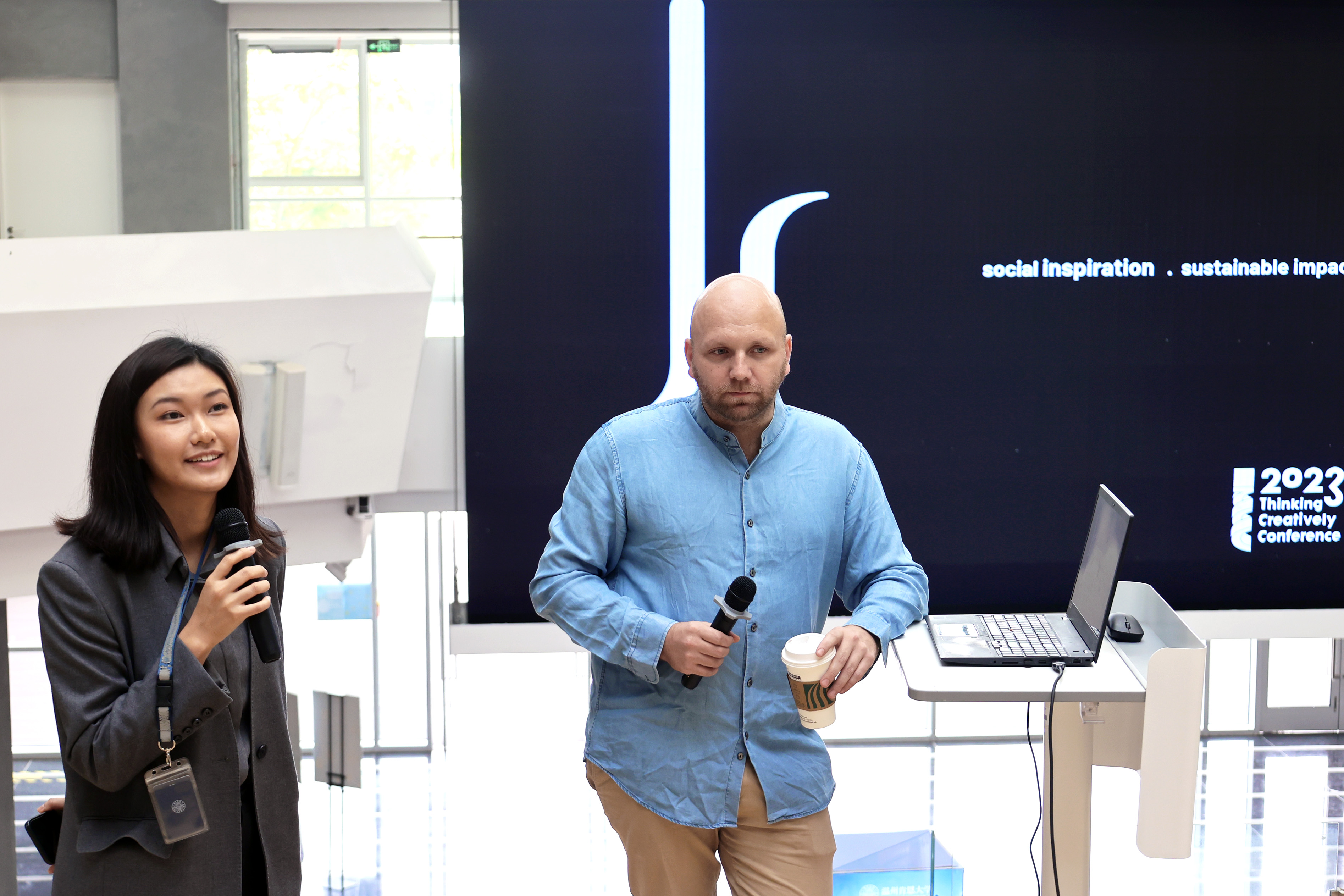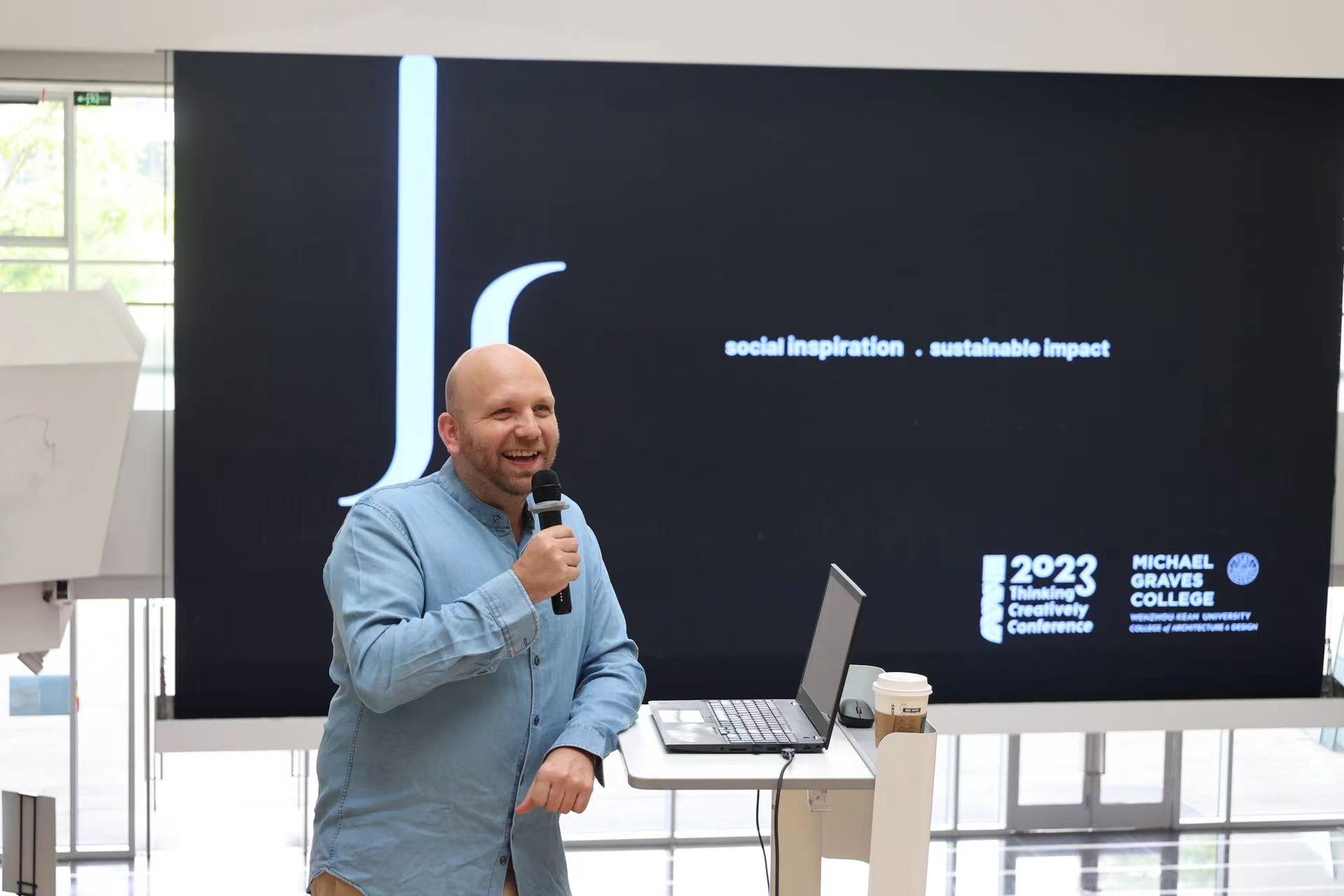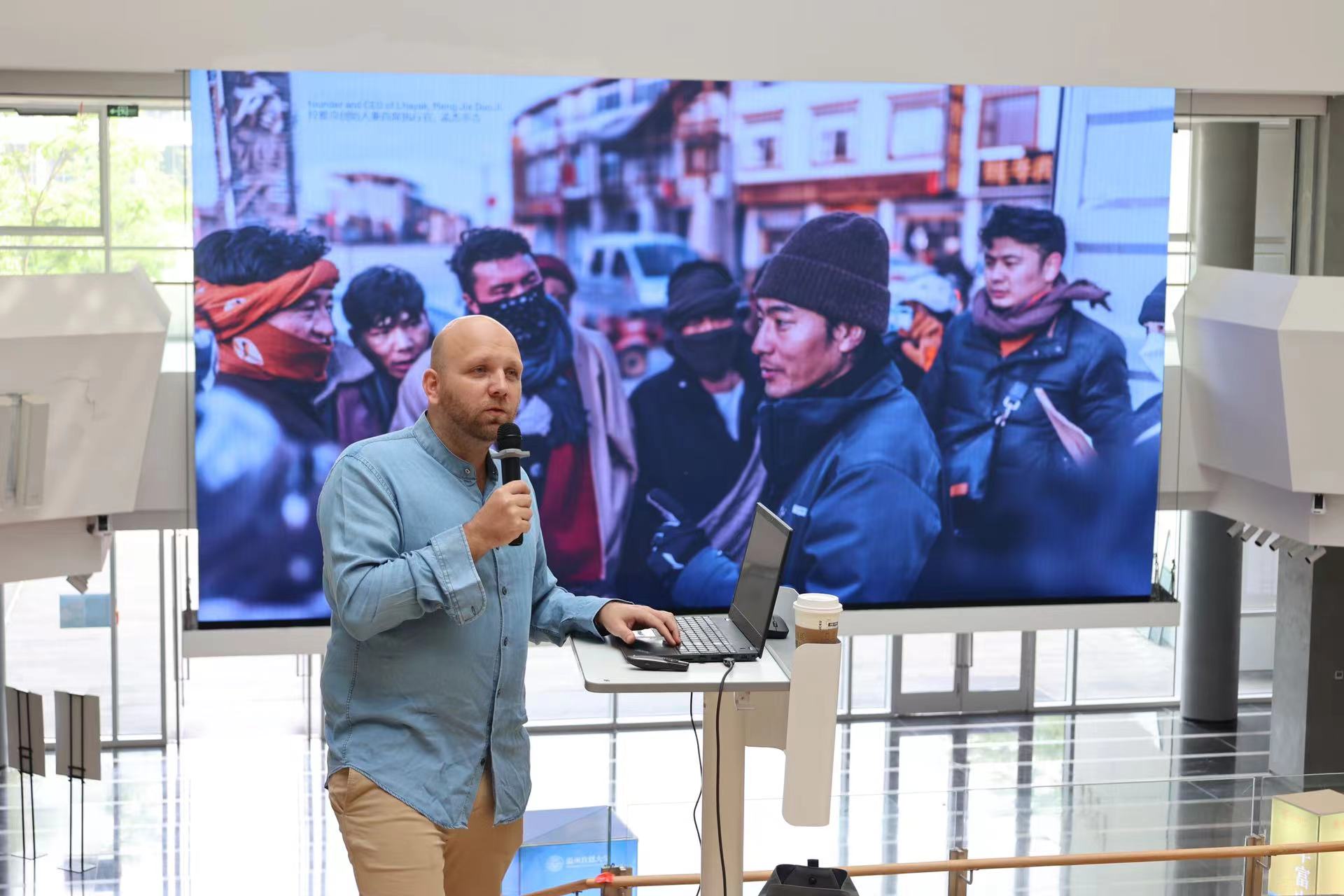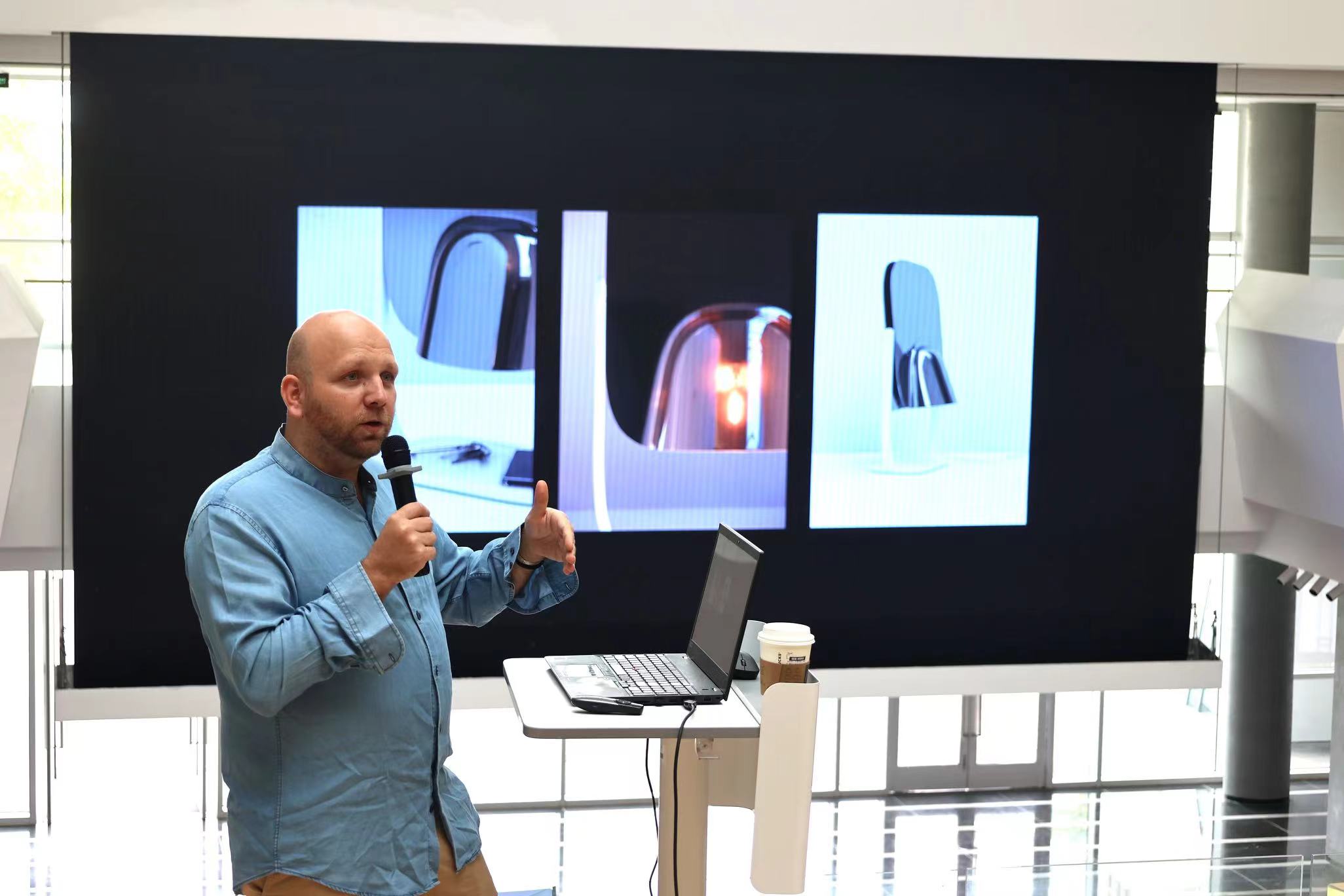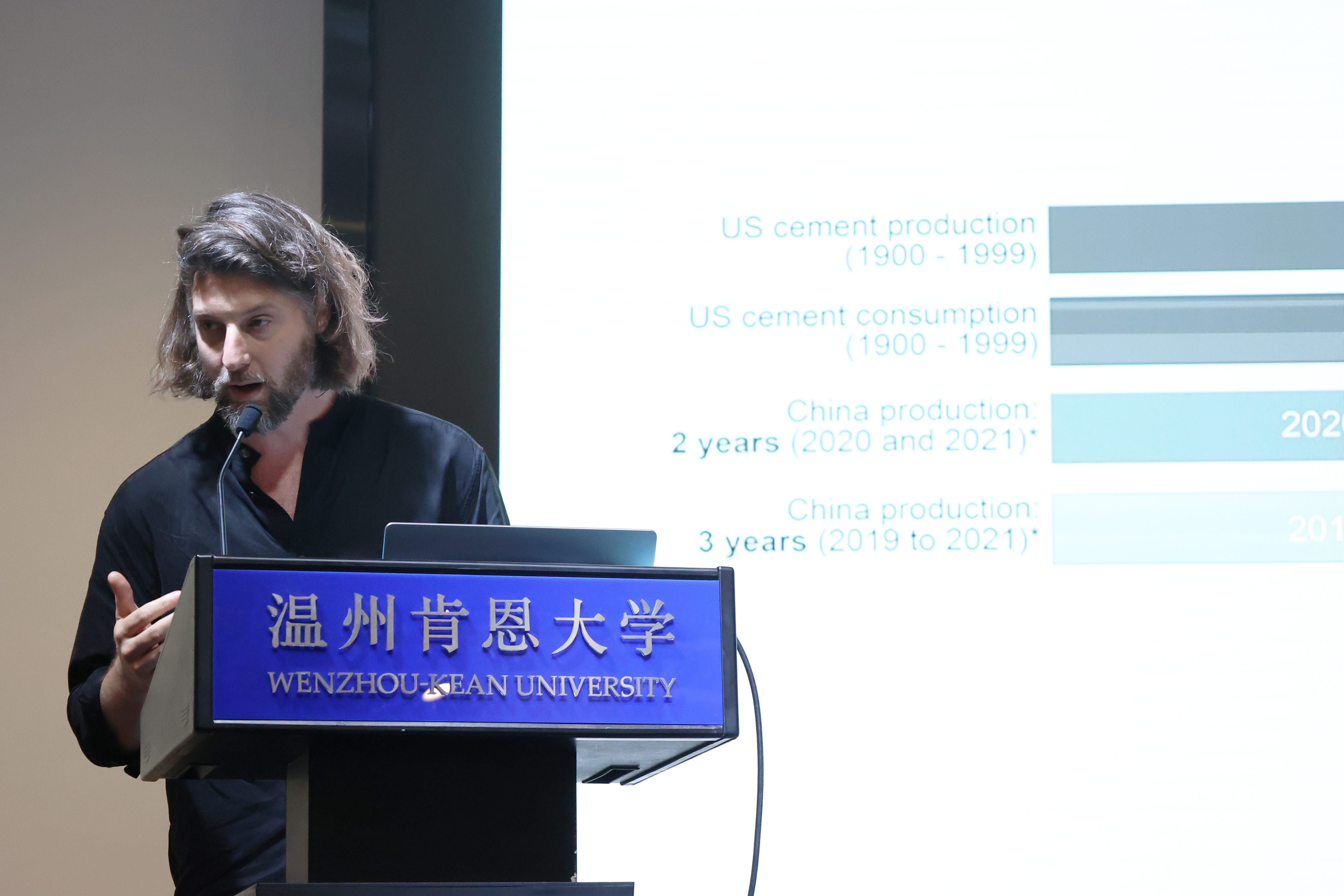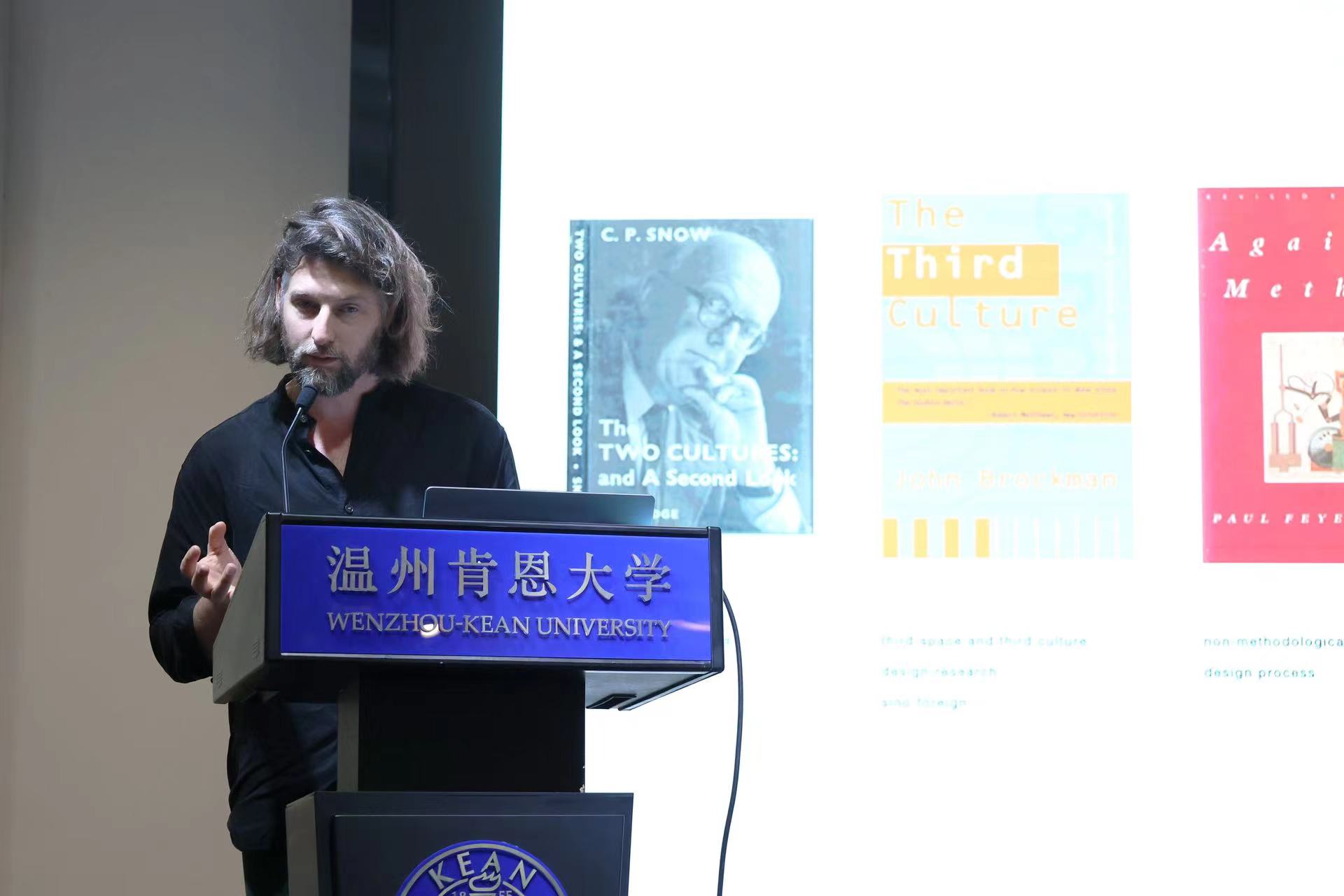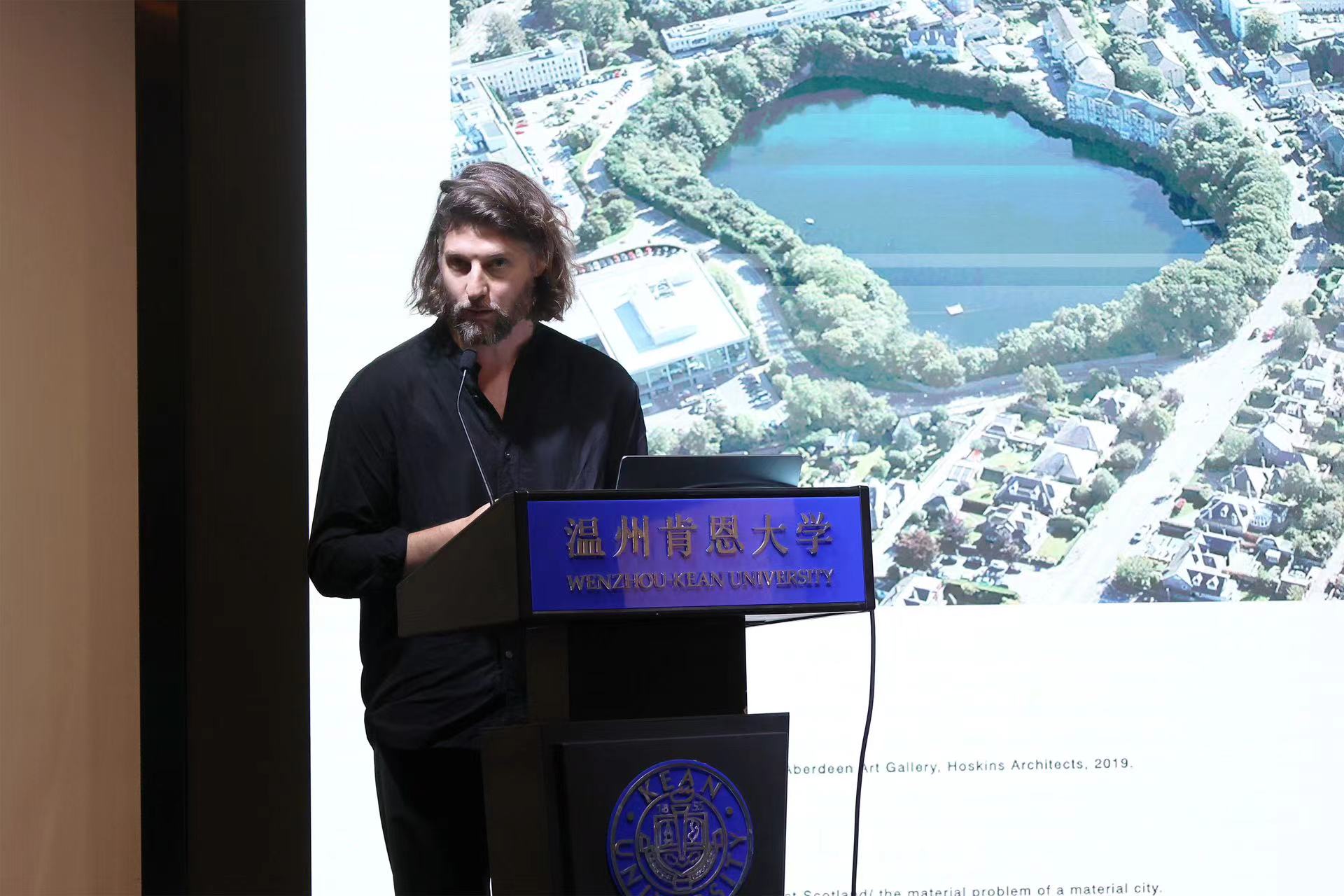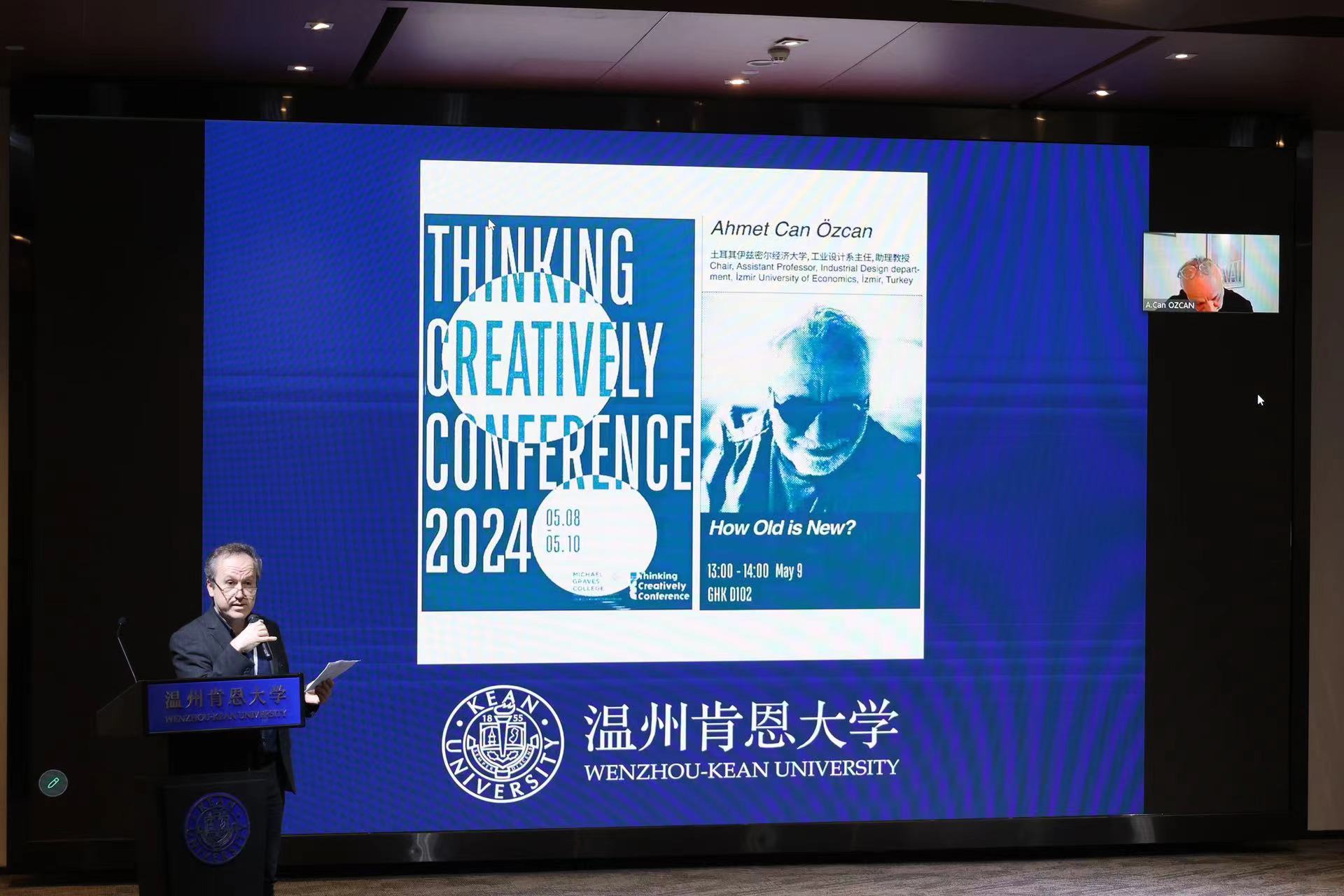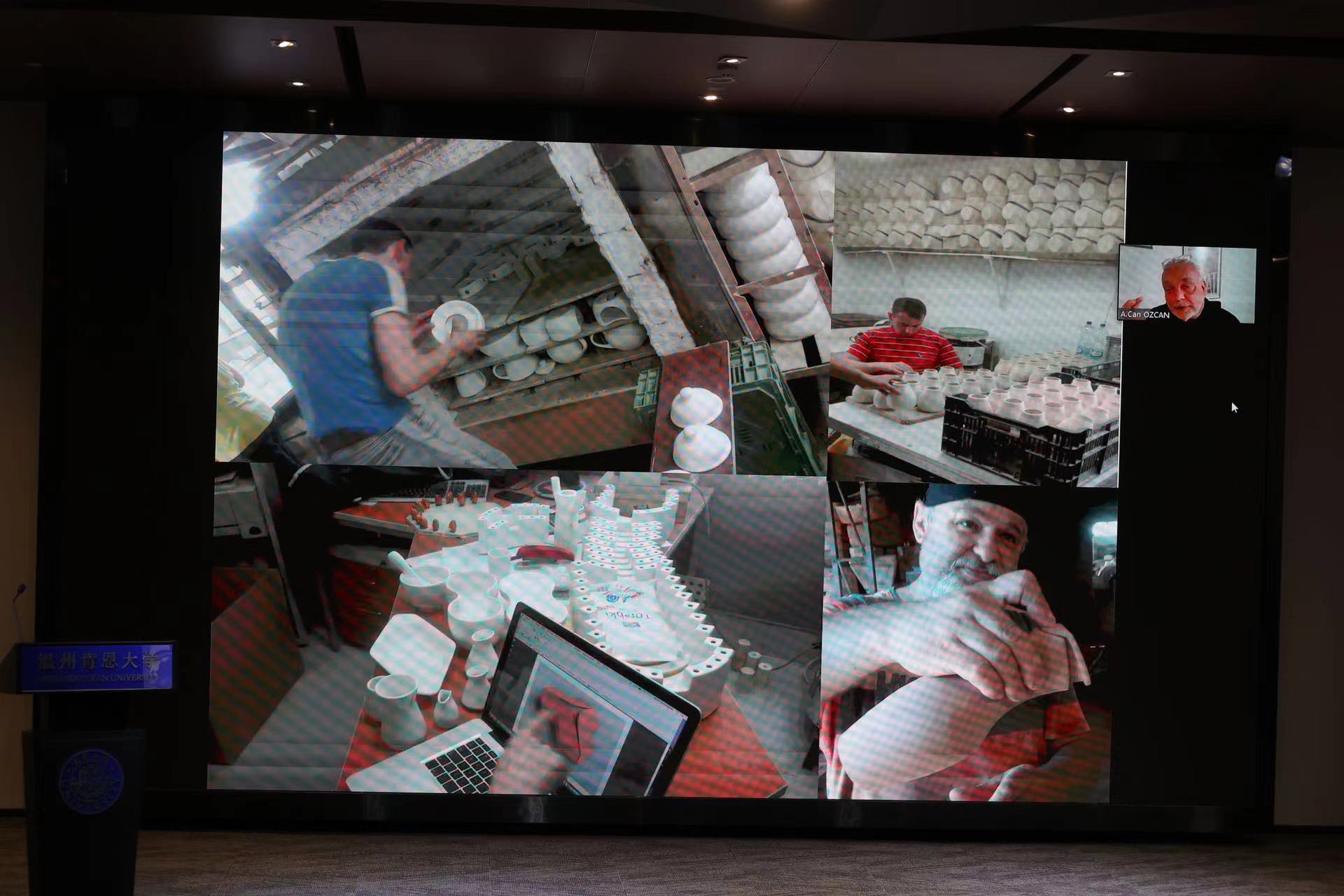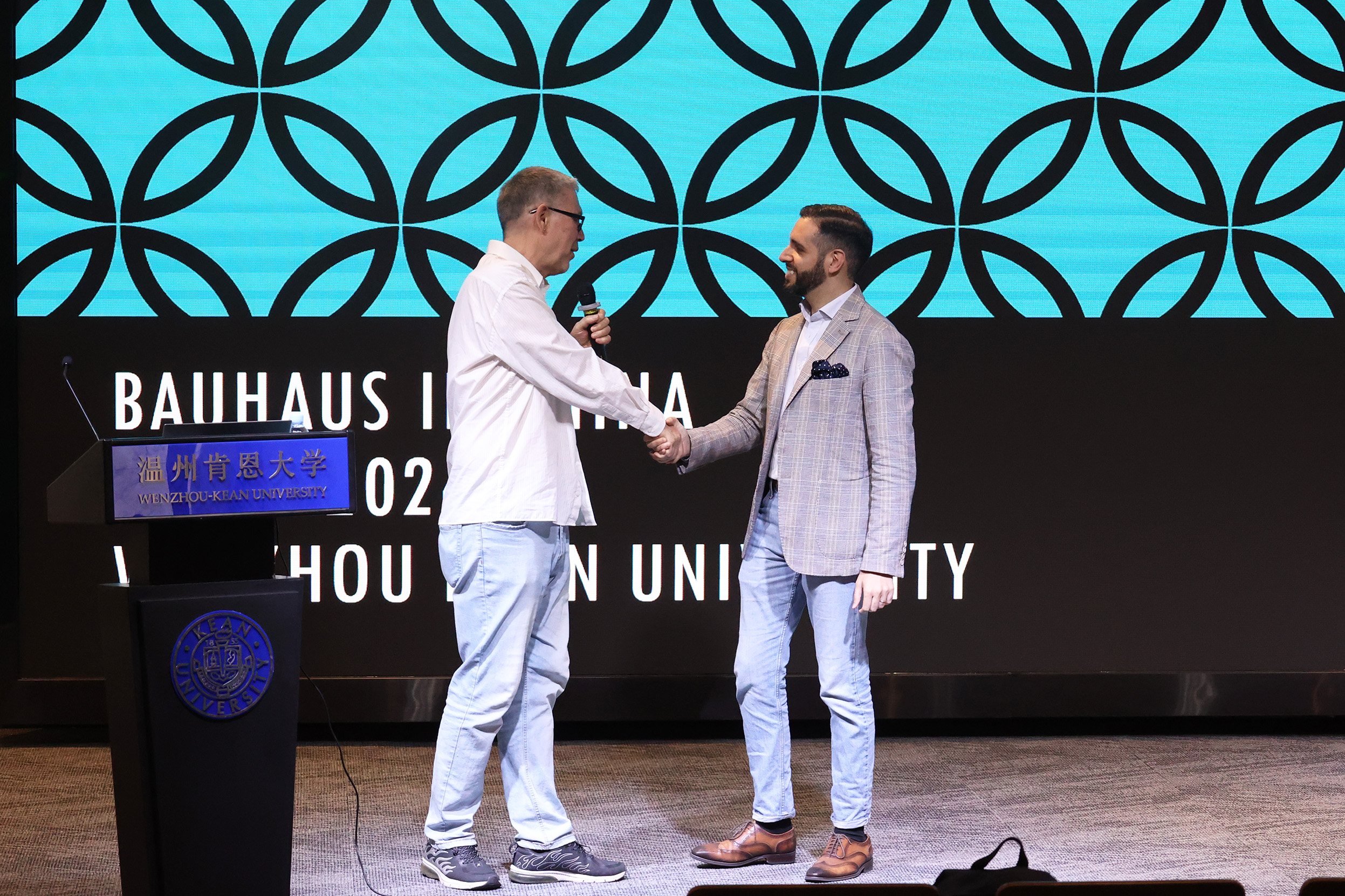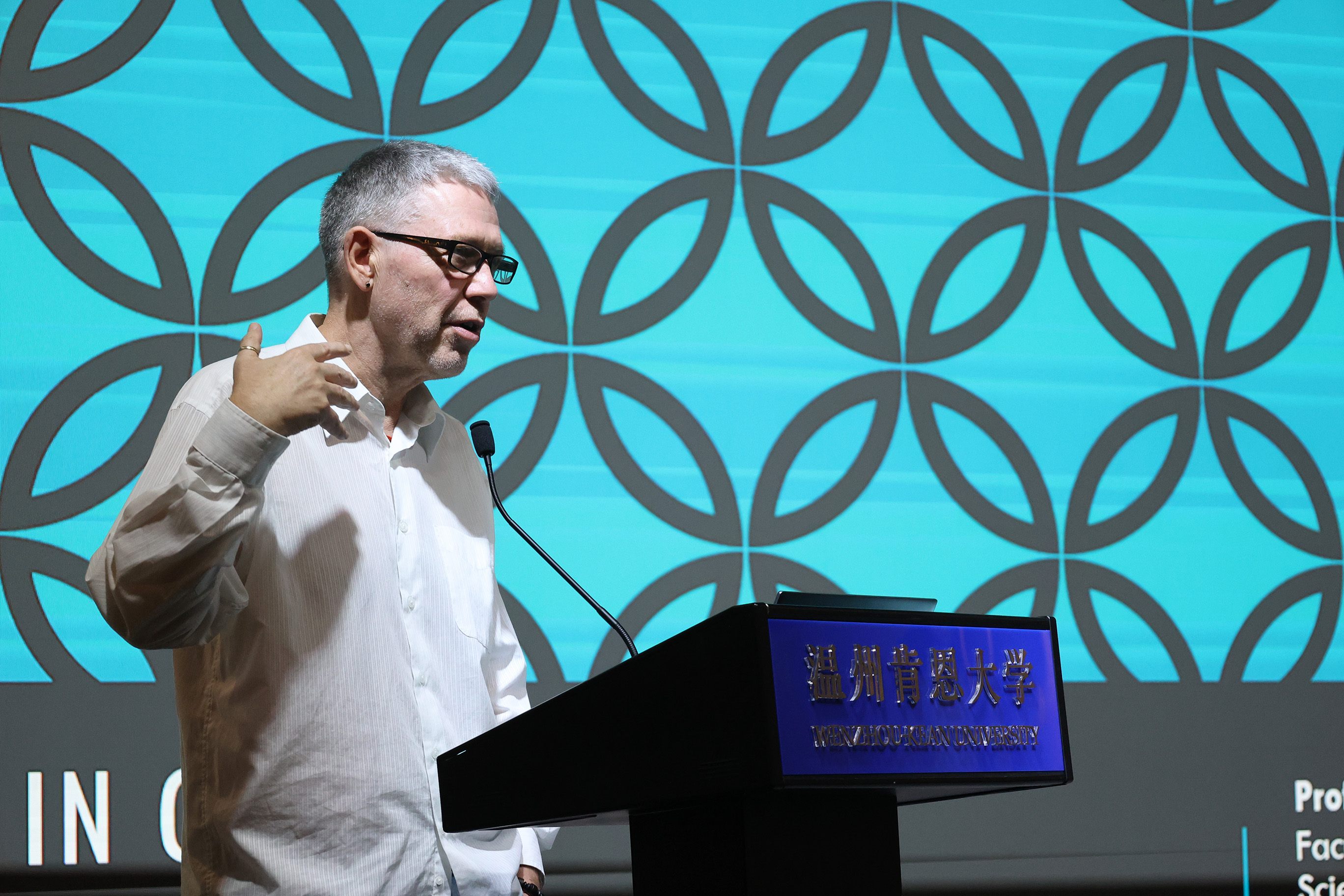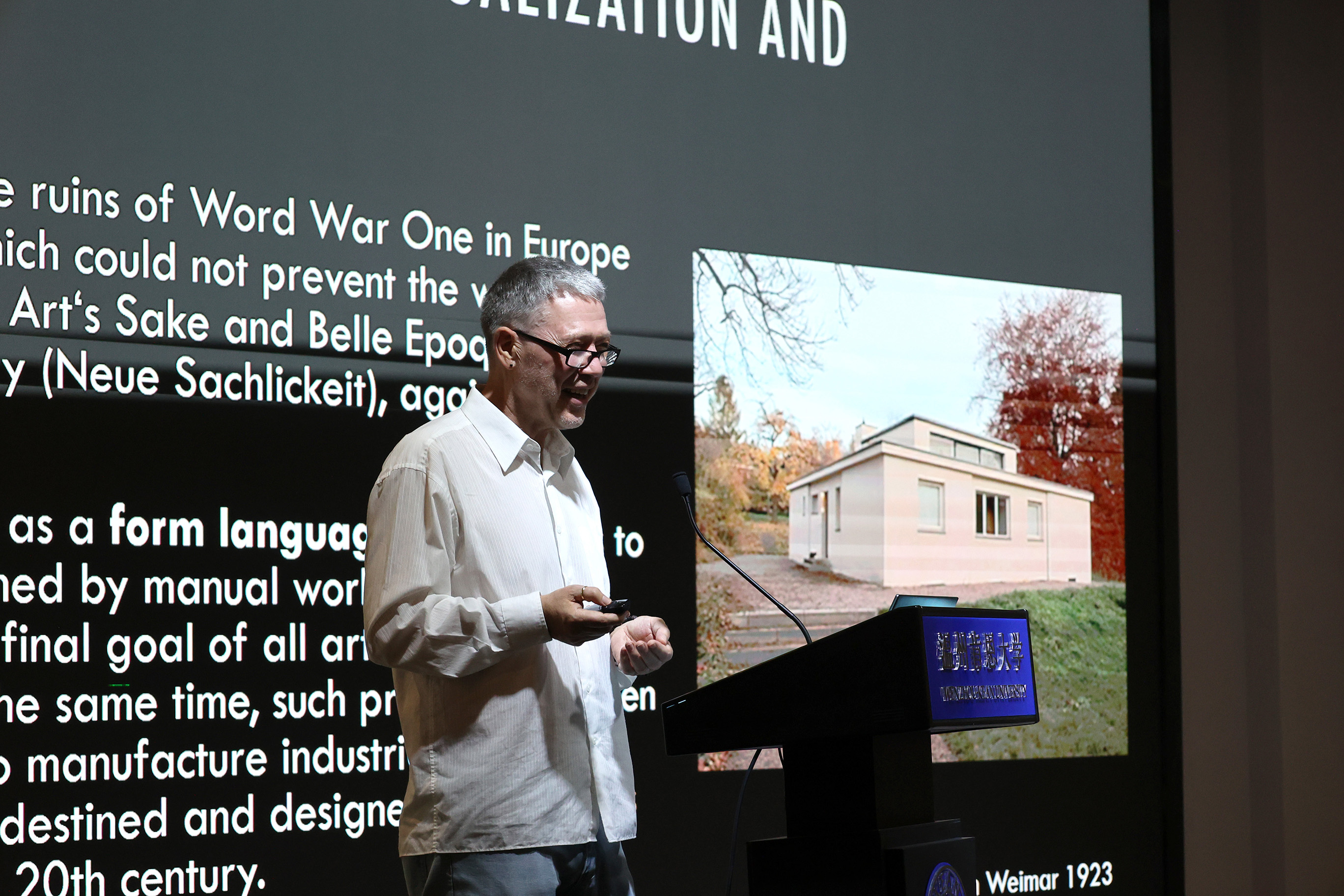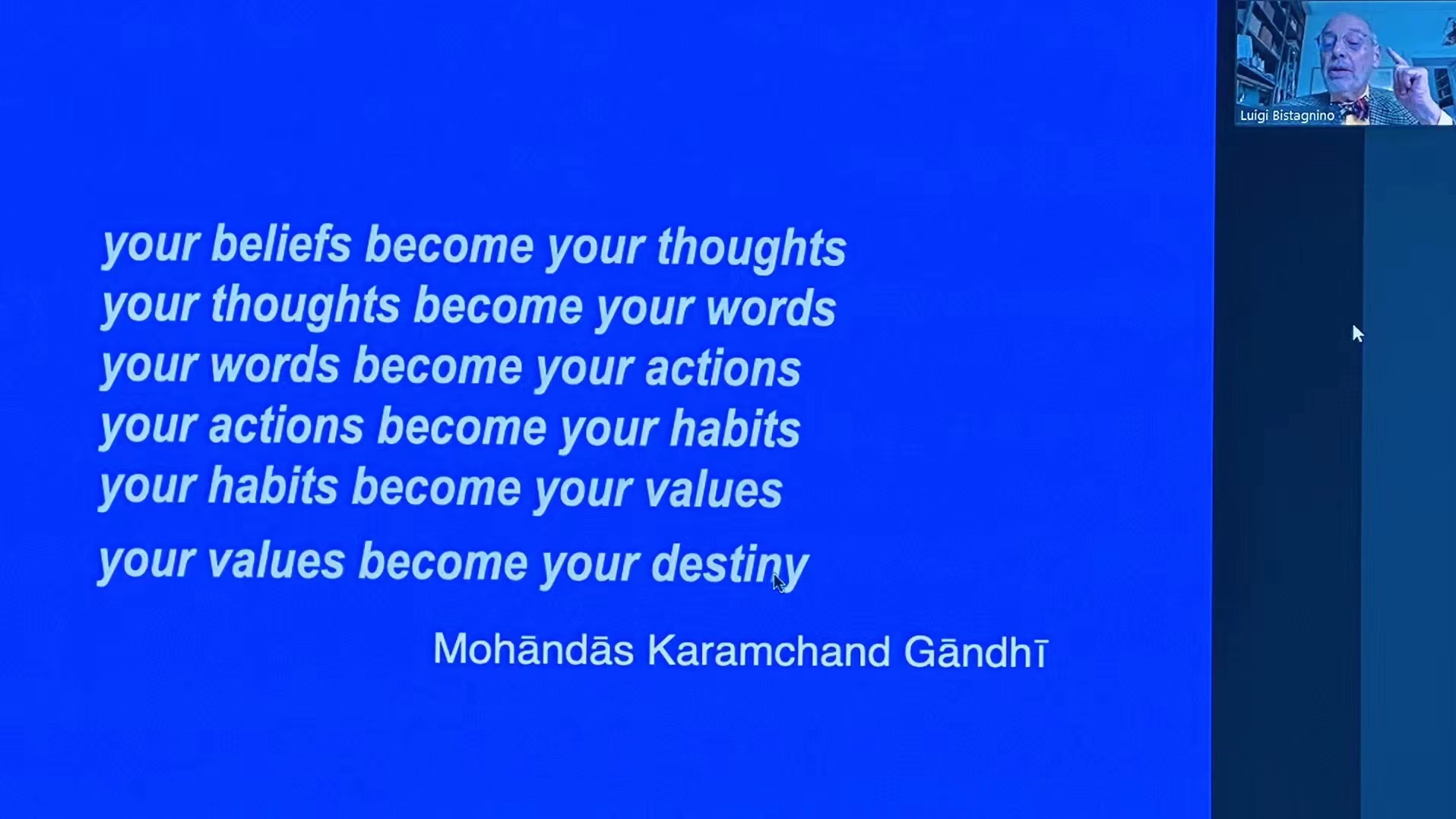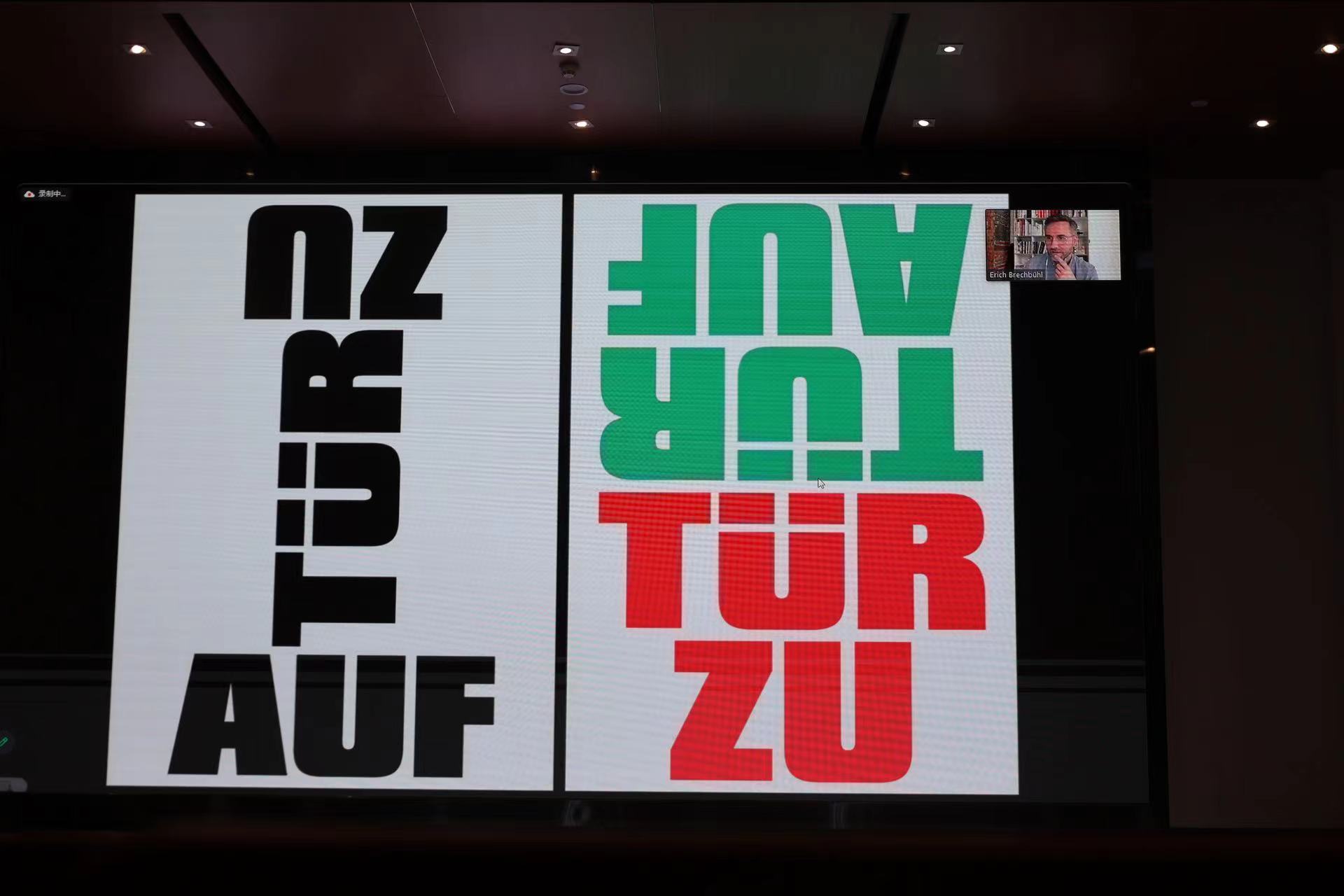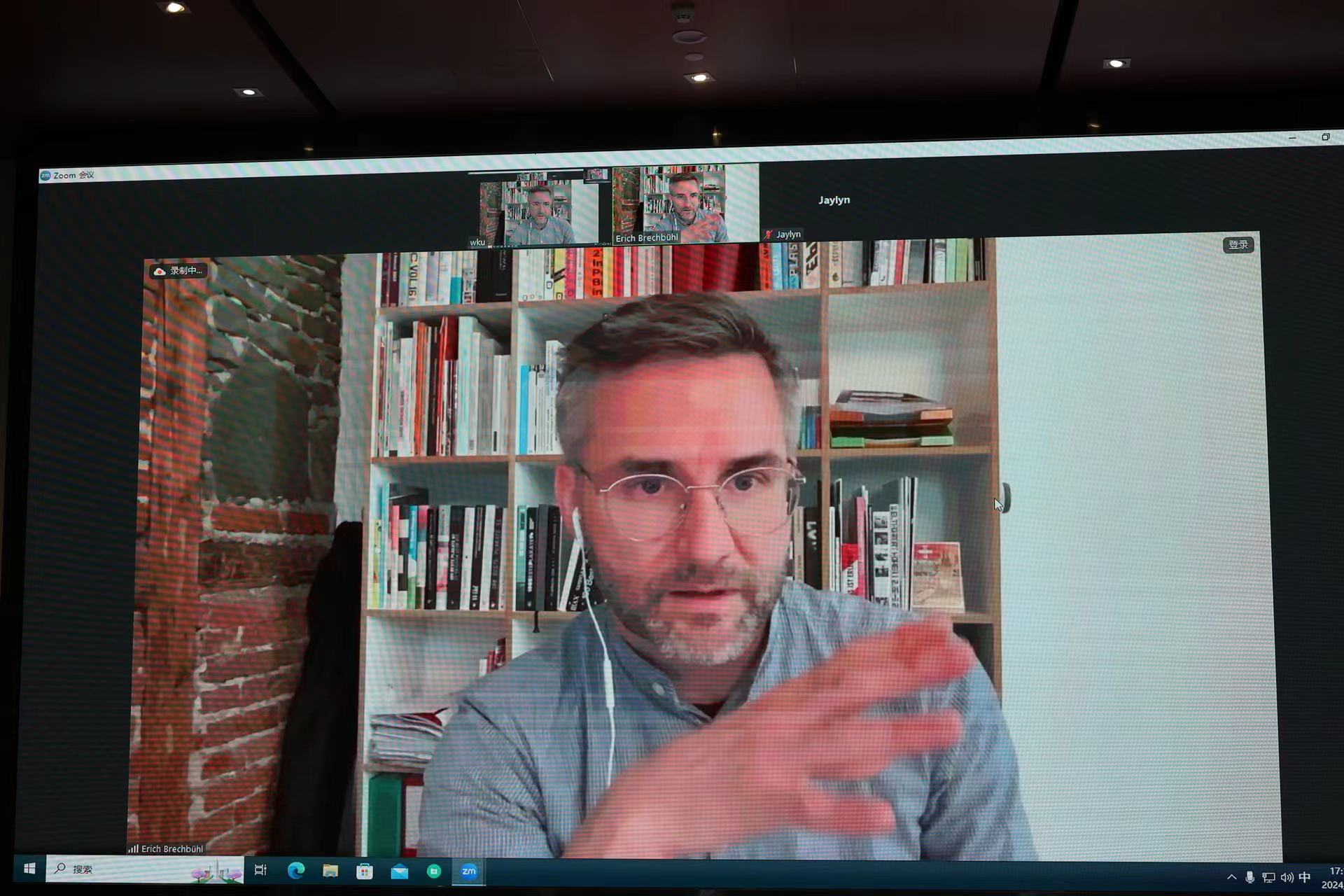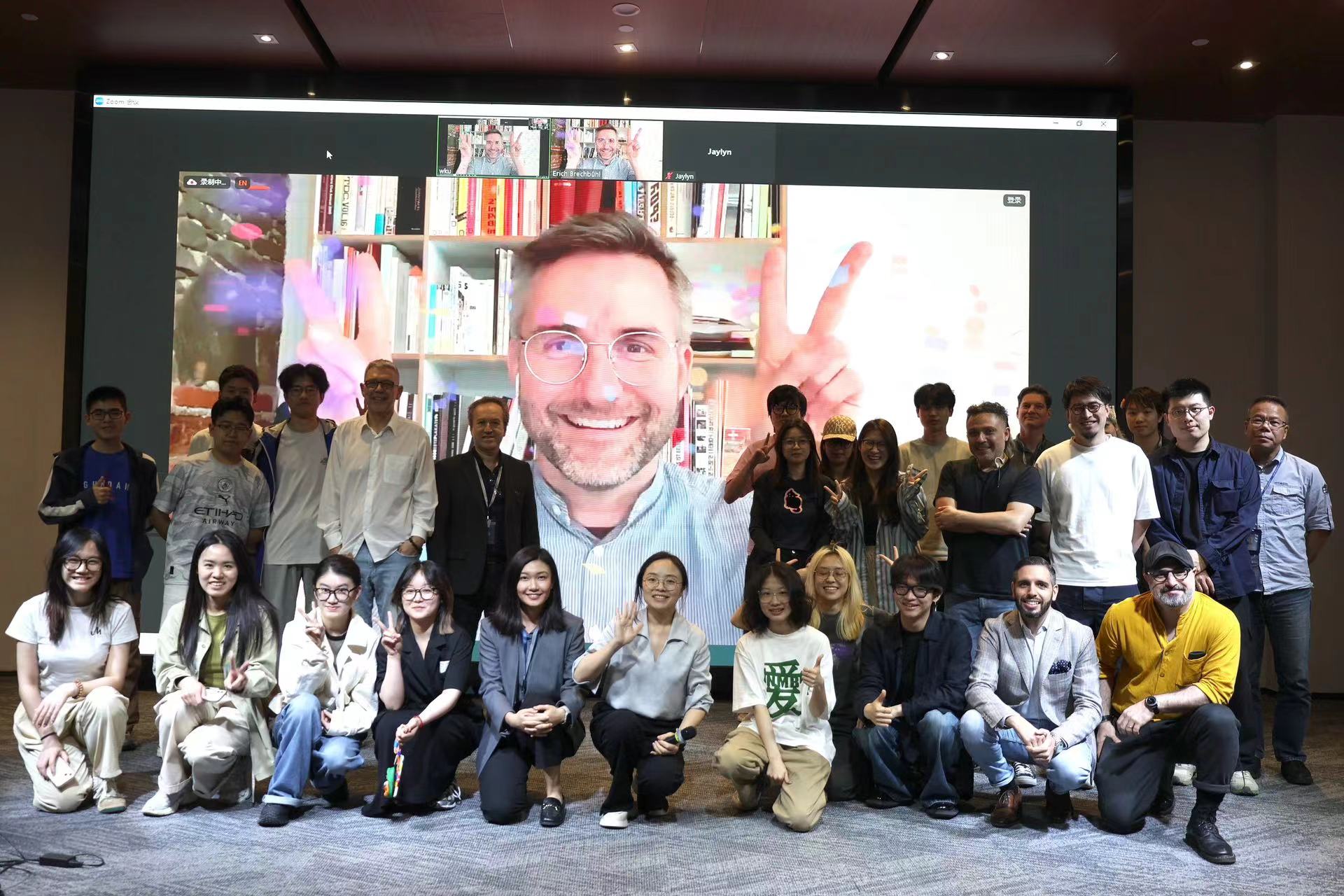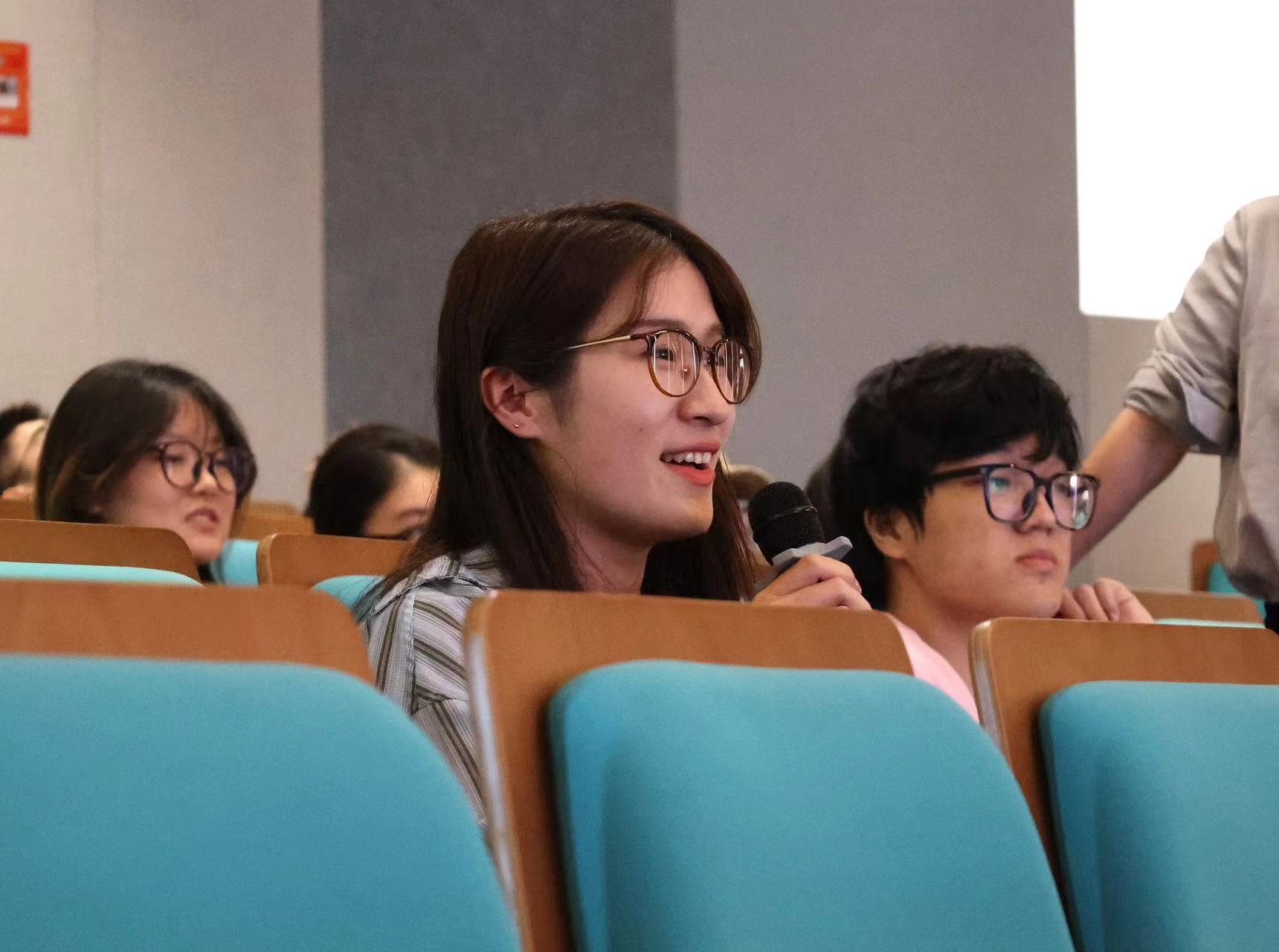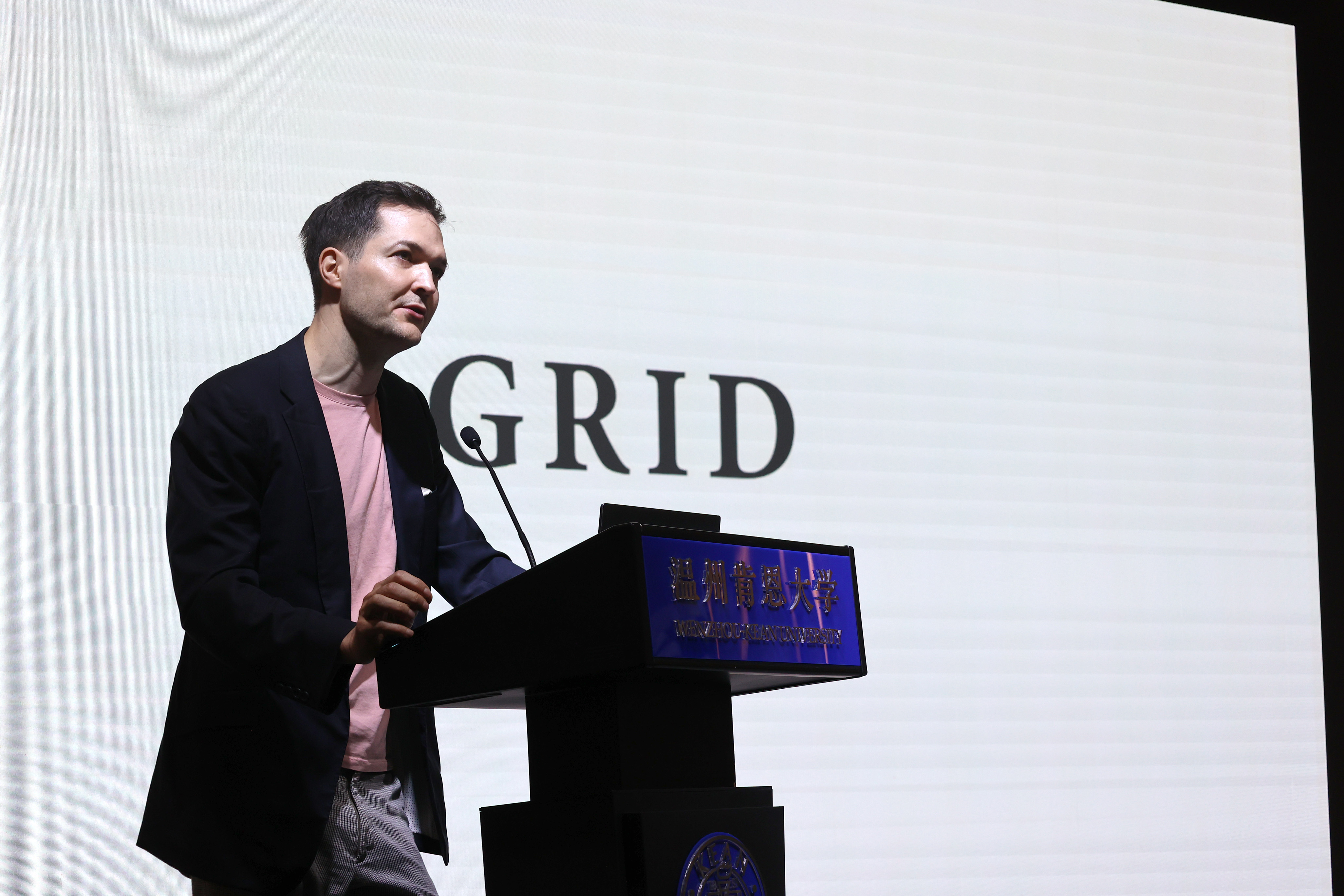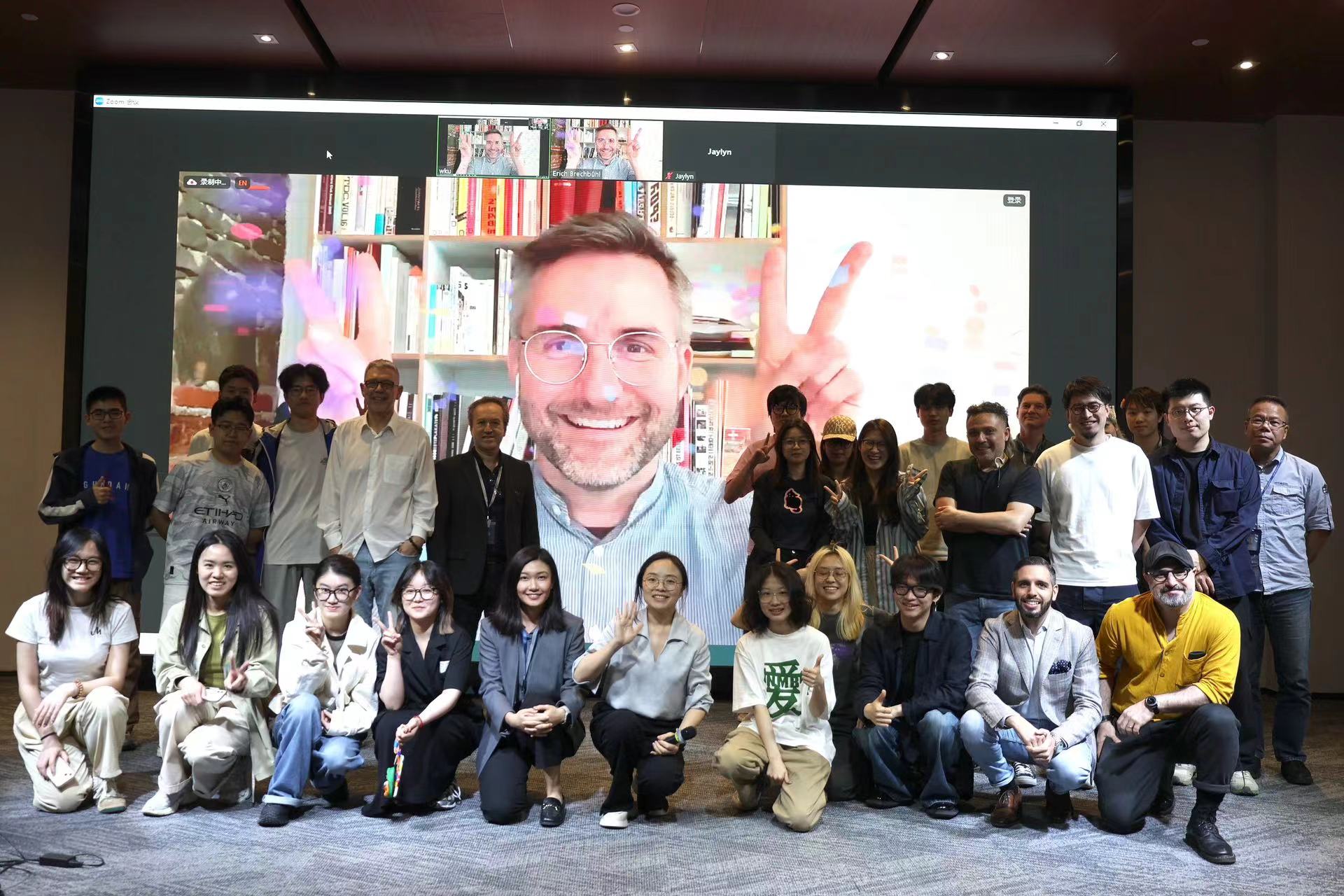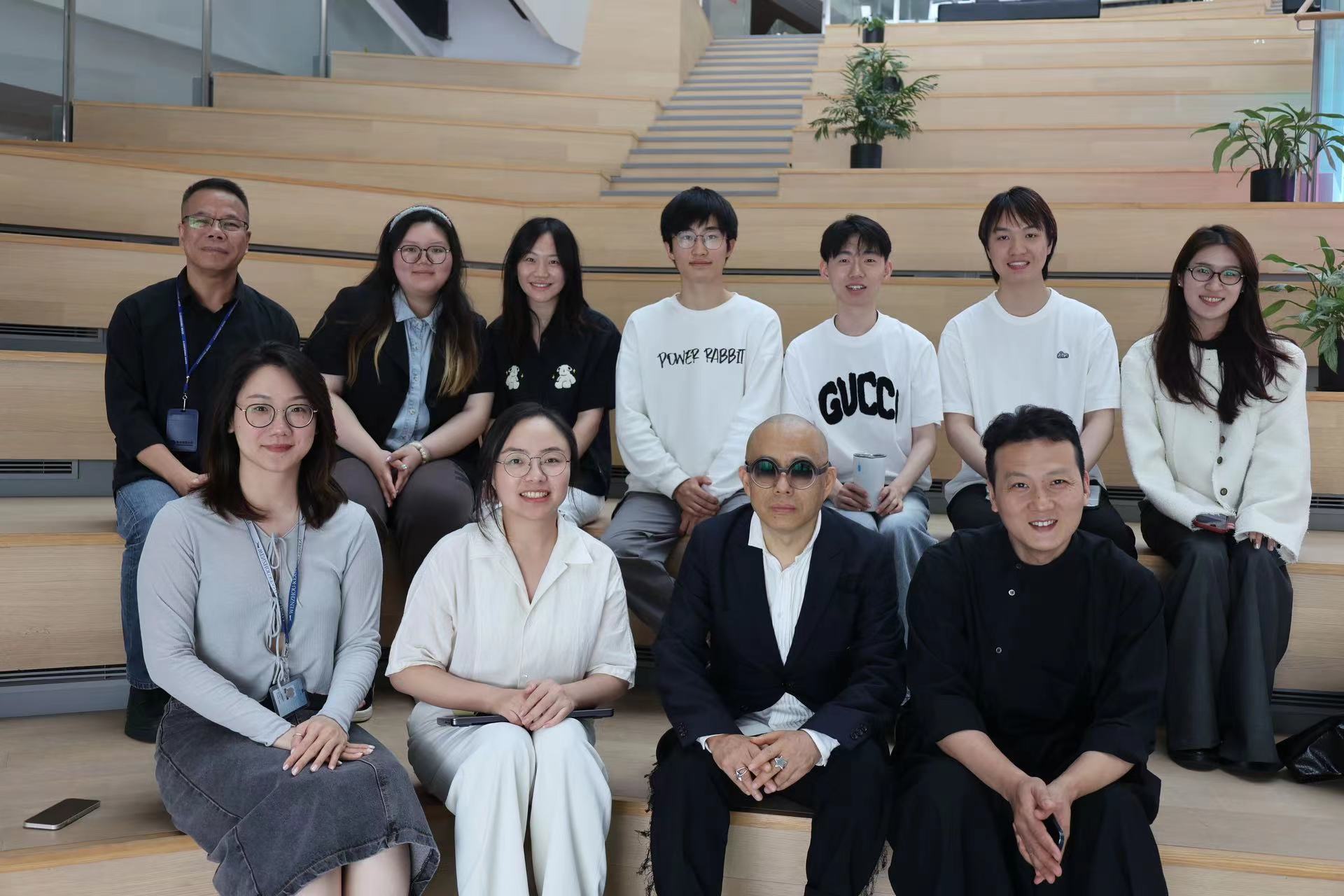From May 8 to 10, 2024, the annual event of the Michael Graves College of Architecture and Design, the Thinking Creatively Conference, was held as scheduled at the Ge Hekai Hall. The conference invited 13 distinguished professionals and scholars from architecture and design. They brought students and faculty remarkable research outcomes and rich practical experiences.
Thinking Creatively Conference 2024
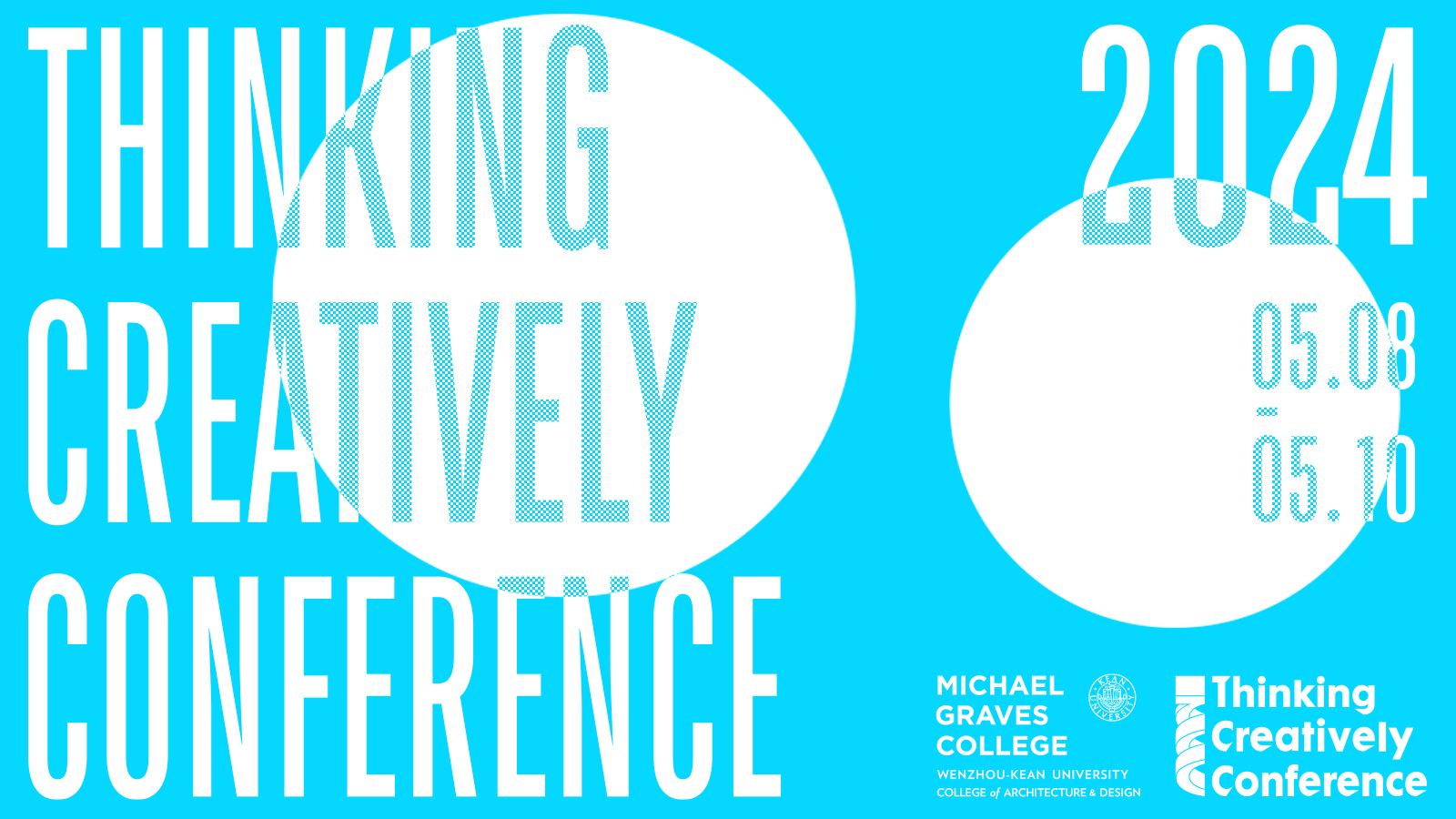
Creative Ecology, can architecture and design heal the planet?
Nasrin Seraji, a distinguished professor at Wenzhou-Kean University, emphasized the responsibility of architects in innovative practice through compelling examples during her lecture. She argued that architects can no longer only focus on aesthetics and functionality, they need to also consider the broader impacts of their work. She advocated for a more holistic approach that incorporates reuse, durability, social impact, and cultural preservation into design considerations. This comprehensive and integrative design approach goes beyond the appearance and function of buildings to consider how they interact with the environment, society, and culture, highlighting the importance of architects finding a balance between social responsibility and innovation.
Professor Seraji’s lecture prompts us to rethink the disciplines of architecture and design, encouraging us to see the seemingly daunting and perilous climate conditions as an opportunity to heal the Earth. She demonstrated that architecture, design, and creative thinking are some of the most appropriate ways to redirect human development toward cleaner, healthier, and carefully transformed environments.
Accommodating a Neurodiverse and Creative Population: Mental Health Issues Among Interior Design Students
Professor MJ Divino discussed the prevalence of neurodiversity among groups of interior design students and proposed relevant solutions for creating healthier learning environments. Due to the rise of technology, especially the prevalence of smartphones and social media, there is an increasing incidence of mental health issues among university students, particularly in creative disciplines: many interior design students experience anxiety and depression. Learning environments with glaring lighting, ineffective curtains, and excessive noise can be detrimental to students with mental health issues. Even small changes in their learning environments – such as increased breaks during class, providing quiet rooms, and adding soft surfaces – can help to address these issues.
Motion Vision and Motion Thinking
Mr. Liu Zhao, the founder and creative director of Another Design in Shenzhen, a member of the Alliance Graphique Internationale (AGI), and an advisor to the Shenzhen Graphic Design Association. His works have won over 200 domestically and internationally prestigious design awards, and he has served as a judge for numerous international competitions. At this conference, Mr. Liu Zhao delivered a lecture titled “Motion Vision and Motion Thinking.” Through a series of pioneering, practical cases and design reflections, he dissected the differences between dynamic vision and animation, as well as the methods and possibilities for dynamic innovation. For instance, in the “What to Eat Today” Yimin local Market project, text was transformed into vivid images of ingredients, presenting a series of daily dishes. In the Guan Zhong Mangba Art Festival project, the voices of dialect were combined with rustic typography, giving a vivid image of regional culture. In the graduation exhibition project for the Guangzhou Academy of Fine Arts, programming thinking constructed a campus and graduate group image in the context of the “Cloud Era.” Additionally, projects such as the Xi’an Community Art Practice Season, Urban Interaction, Guangzhou Image Triennial, and Shenzhen-Hong Kong Bi-City Biennale of Urbanism\Architecture all showcase the creative thinking and diverse narratives of Mr. Liu Zhao and his team.
Through continuous practical exploration, Mr. Liu Zhao has provided us with solutions on how dynamic vision can transcend form. He integrates new media with traditional mediums, extensively applying cross-media design methods in design practice. By combining local language and culture in his visual research, he balances commercial objectives with experimental expressions, thereby restoring the cultural essence of China.
The Journey to Beauty
Mr. Zhao Qing is the founder of Nanjing Hanqingtang Design, a master’s supervisor at Nanjing University of the Arts, and a member of the Alliance Graphique Internationale (AGI). His design works have won awards or been selected in almost all major graphic design competitions and exhibitions worldwide. His book designs have been honored with the title of “Most Beautiful Book” over thirty times. In this lecture, Mr. Zhao shared in detail the design works from his over 30-year career, gradually unfolding an aesthetic scroll titled “The Journey to Beauty.” From the Orient to Jiangnan, this is not only a design-sharing session but also a journey of returning to his heart. He began the lecture with “Qing Ping Yue,” using dynamic video to vividly explain over 400 pages of PPT, which included graphic and typography design as well as book designs such as “Kent,” “Jiahui,” “Lovers’ Bilingual Dictionary,” and “Han Shu Seventeen.”
Touching “space,” perceiving “elegance,” and deconstructing “Chinese characters.” He constructs spaces within books, provides a comprehensive view of brand logos, experiences the world through posters, collects the most beautiful selections from Leipzig, and explores records on a long paper journey. Breathing and growing with Chinese characters, he fills the Eastern context, establishing a unity of form and meaning. Mr. Zhao Qing’s design philosophy deeply impressed the young design students. They were immersed in the stunning design works and were filled with admiration for the Nanjing Meiyuan Studio, where Mr. Zhao’s team is based, and the reading space of “The World’s Most Beautiful Book.”
Generative AI in Industrial Design
The focus of this lecture is the application of generative artificial intelligence (AI) in the design process for creative ideation, as well as the potential impact of AI as a supportive technology in the fields of design and education. Sevi Merter believes that AI is a valuable assistant tool for designers, making design more convenient when used fluently. She conducted a case study involving students from the Industrial Design Department at Yasar University, showcasing how students used prompts and AI-generated models for design.
Generative AI in Industrial Design
The focus of this lecture is the application of generative artificial intelligence (AI) in the design process for creative ideation, as well as the potential impact of AI as a supportive technology in the fields of design and education. Sevi Merter believes that AI is a valuable assistant tool for designers, making design more convenient when used fluently. She conducted a case study involving students from the Industrial Design Department at Yasar University, showcasing how students used prompts and AI-generated models for design.
Social inspiration and sustainable execution within a design practice
Joeri Reynaert is a designer from Belgium who has settled in Shanghai for many years and has a deep connection with Chinese design. He has previously worked for well-known European brands such as Foscarini from Italy and Extremis from Belgium. After becoming an independent designer, he came to China and founded a design studio with his friends. In 2018, he established JRS and designed for some startup and established brands in China. Drawing inspiration from the social and cultural transitions of various cultures, he aims to adapt to these environments rather than follow market trends. His work is always innovative, with themes that tend to blend utility with tradition and draw inspiration from contemporary life. During his visit to Wenzhou-Kean, he shared his past classic designs and ongoing projects with us. He also demonstrated how JRS has developed a whole range of office desk solutions derived from a simple screen design.
WKDL: Recent work
Distinguished Associate Professor David Vardy of Wenzhou-Kean University presented the recent design-research practice of WKDL (Wenzhou-Kean Design Lab), a studio that explores relationships between materials, architecture, and culture, emphasizing the importance of approaching sustainability through an in-place engagement with context and societies. He views students as collaborators and co-creators, nurturing their creativity and interdisciplinary learning through undertaking practical projects of architecture and design with them. Professor Vardy underscores the significance of understanding and utilizing sustainable materials in design and construction by integrating practical solutions, showcasing the transformative potential of architecture in addressing societal issues and shaping culture.
How old is new?
Assistant Professor Ahmet Can Özcan from Izmir University of Economics in Turkey presents the viewpoint that “How old is new” is a lecture about how new things are designed and implemented through exploring effective creative innovation principles in nature and artificial design. Ahmet Can Özcan covers historical and contemporary design examples, particularly emphasizing how culture and language shape designers’ ways of thinking. He expresses how designers utilize the relationship between nature and artificial design to create designs. He emphasizes that design is not just about innovating from scratch but also about extending and evolving existing designs based on nature and human-made foundations. This connection and continuity allow designs to integrate more into human life, echoing the symbiotic relationship between nature and human environments.
Bauhuas and beyond-creativity in the age of computational design
Holger Briel extensively elaborated on various aspects of the Bauhaus movement (visuality, space, performance) and how it continues to influence contemporary design and creativity. He discussed painter Paul Klee and his quasi-architectural drawings, emphasizing their impact on historical Bauhaus and their relevance today. Finally, he explored the evolution of Bauhaus in contemporary German design and its potential interaction with artificial intelligence.
Design with the common good in mind
Professor Luigi Bistagnino, with decades of experience in design education, shared his educational philosophy and insights into the future development focus of design, greatly benefiting us.
Professor Bistagnino’s remote connection provided us with a rare opportunity to glimpse the insights and philosophy of a seasoned design educator. His educational philosophy likely includes a balance between creativity and practicality, the importance of interdisciplinary collaboration, and thoughtful consideration of future design trends. These valuable experiences and insights will assist us in deeper contemplation and development within the field of design.
Type as image
Erich Brechbuhl, a renowned Swiss designer, member of the Alliance Graphique Internationale (AGI), and co-organizer of the Weltformat Graphic Design Festival in Lucerne, delivered a lecture titled “Text as Image.” During the 1.5-hour session, he shared numerous poster works and dynamic experiments centered around typography. These included projects such as “Swiss Graphic Design in China” for the West Bund Art Center in Shanghai, the Lucerne Neubad logo and poster series, the Aeternam Theater poster series, the Zurich Design Museum poster series, and the posters for Steinemann’s Happy Show. From sketches, typographic printing, static composition, and dynamic techniques to iterative revisions, he provided a detailed analysis of the creation and considerations behind each piece. The subsequent Q&A session also proved to be immensely beneficial for the students.
Practices of not building
Gregory Kovacs discussed the significant changes in the Chinese architecture industry and how the increasingly serious environmental and economic issues are changing the nature of the practice from designing brand new structures to massing adaptive reuse. The lecture explored how architects can address these challenges and what the role of an architect signifies in this new environment. By showing different projects he led in several regions, Gregory Kovacs explored opportunities to improve environmental quality across various aspects, from urban design to individual structures and building components.
After three days, the 2024 Thinking Creatively Conference concluded successfully at the beautiful campus. See you next year!



